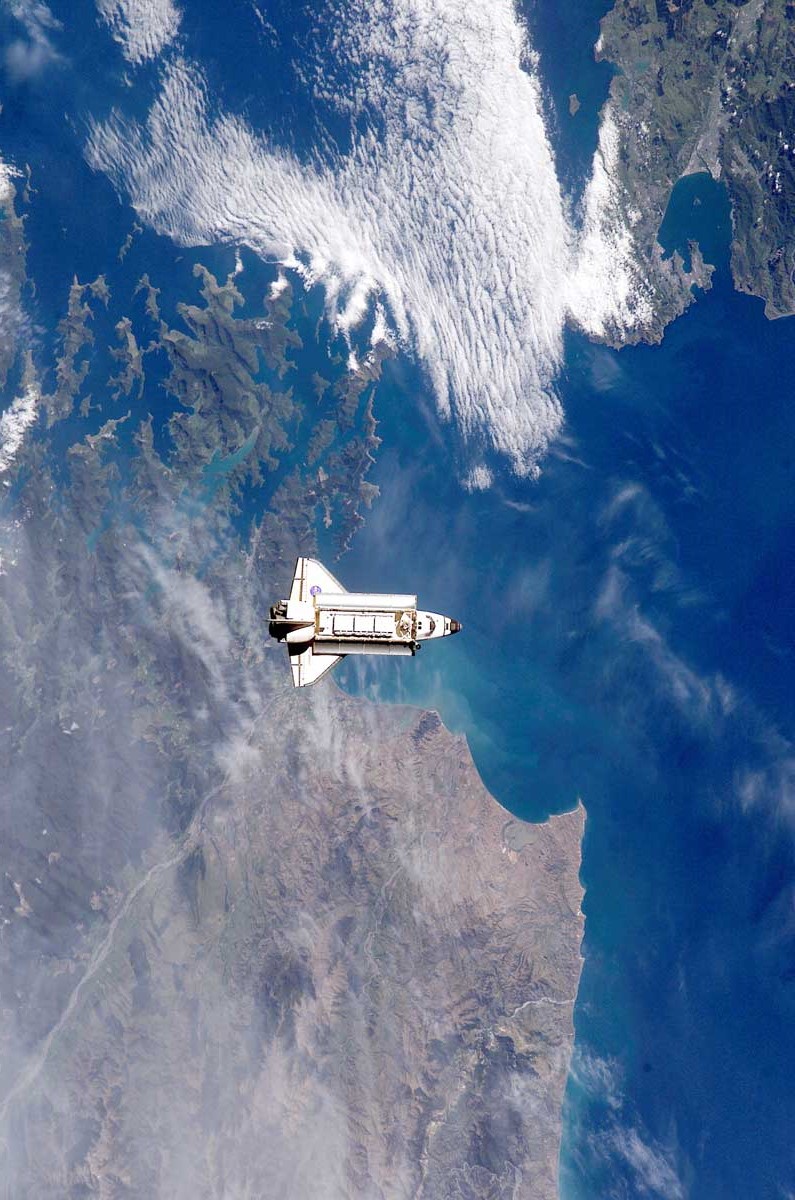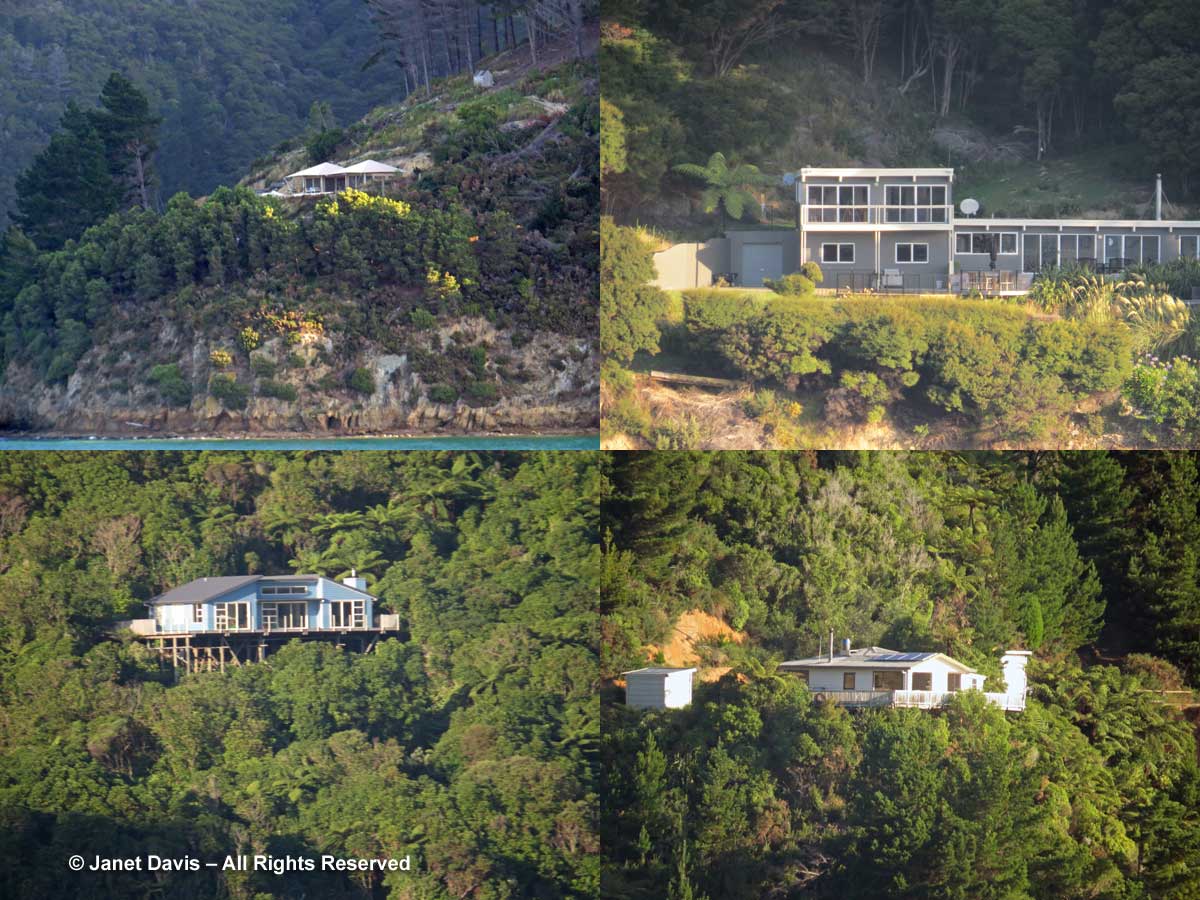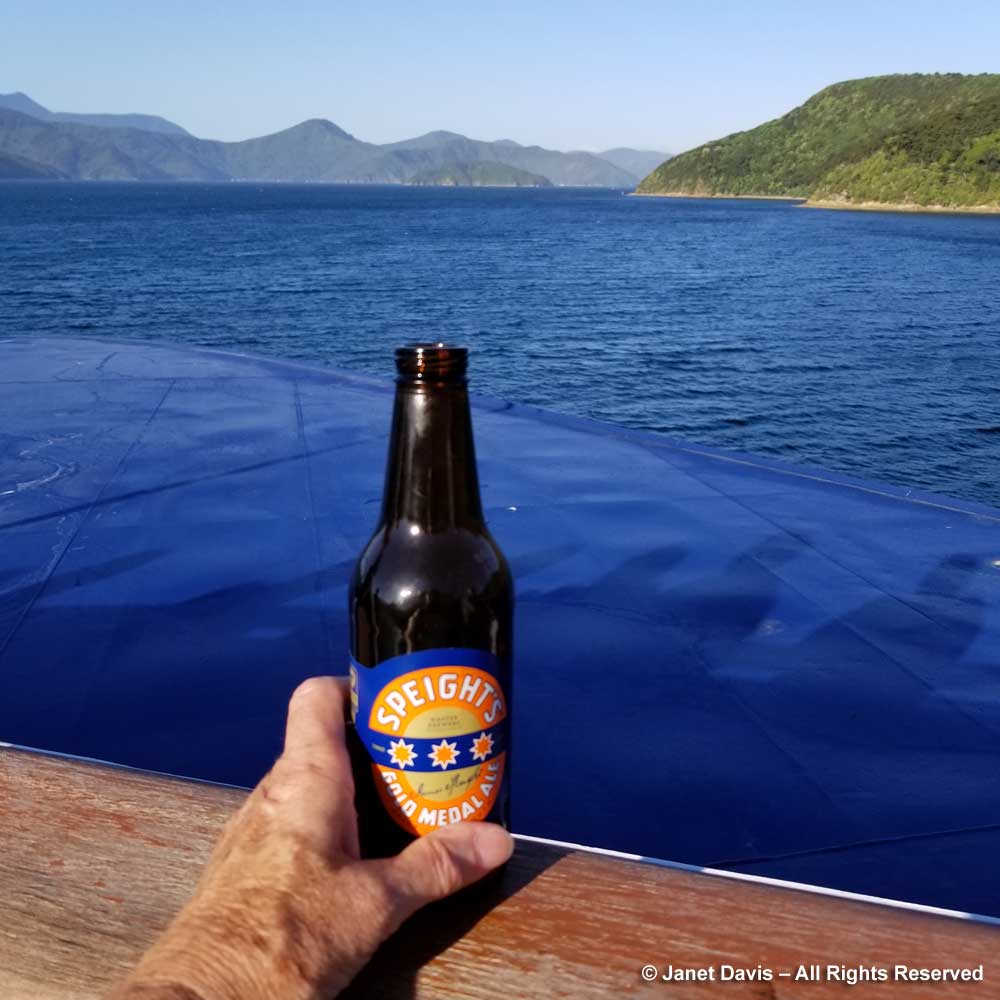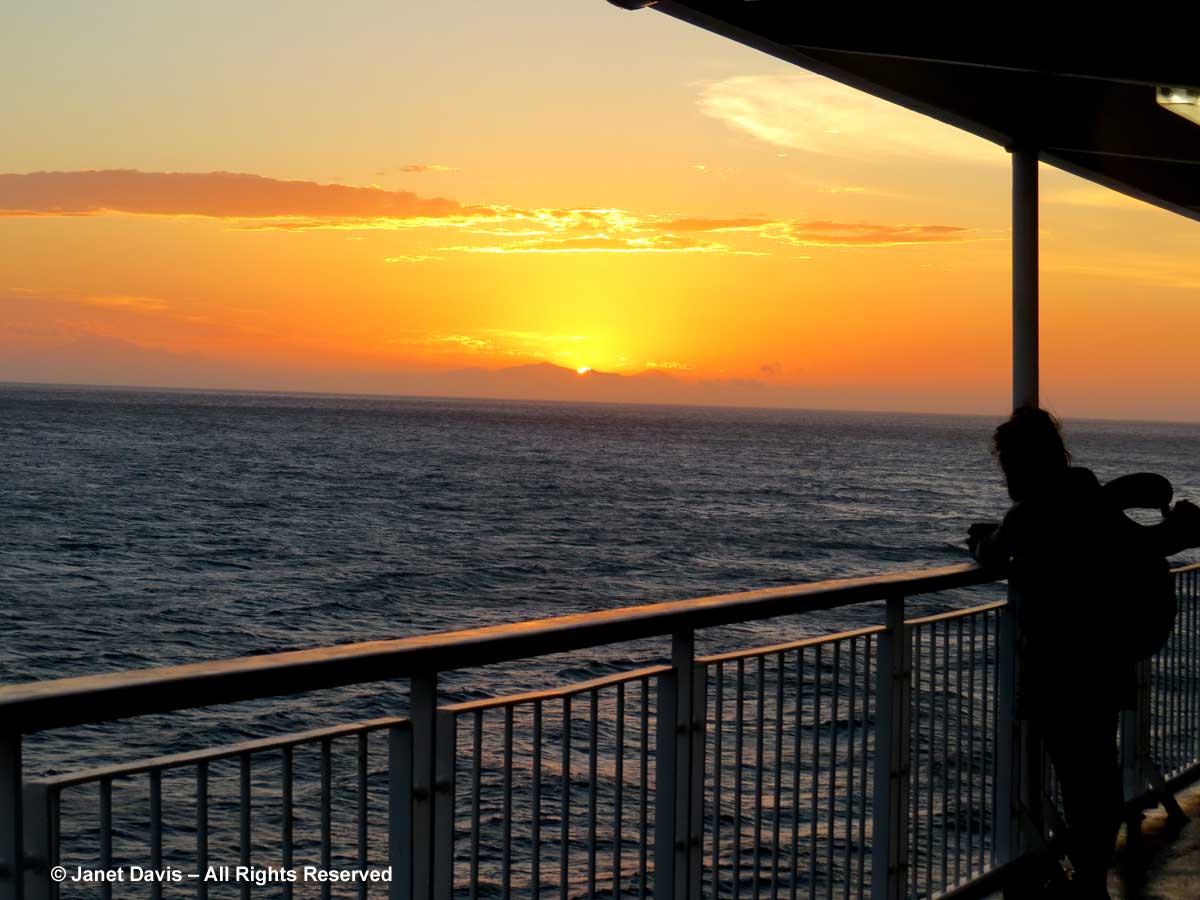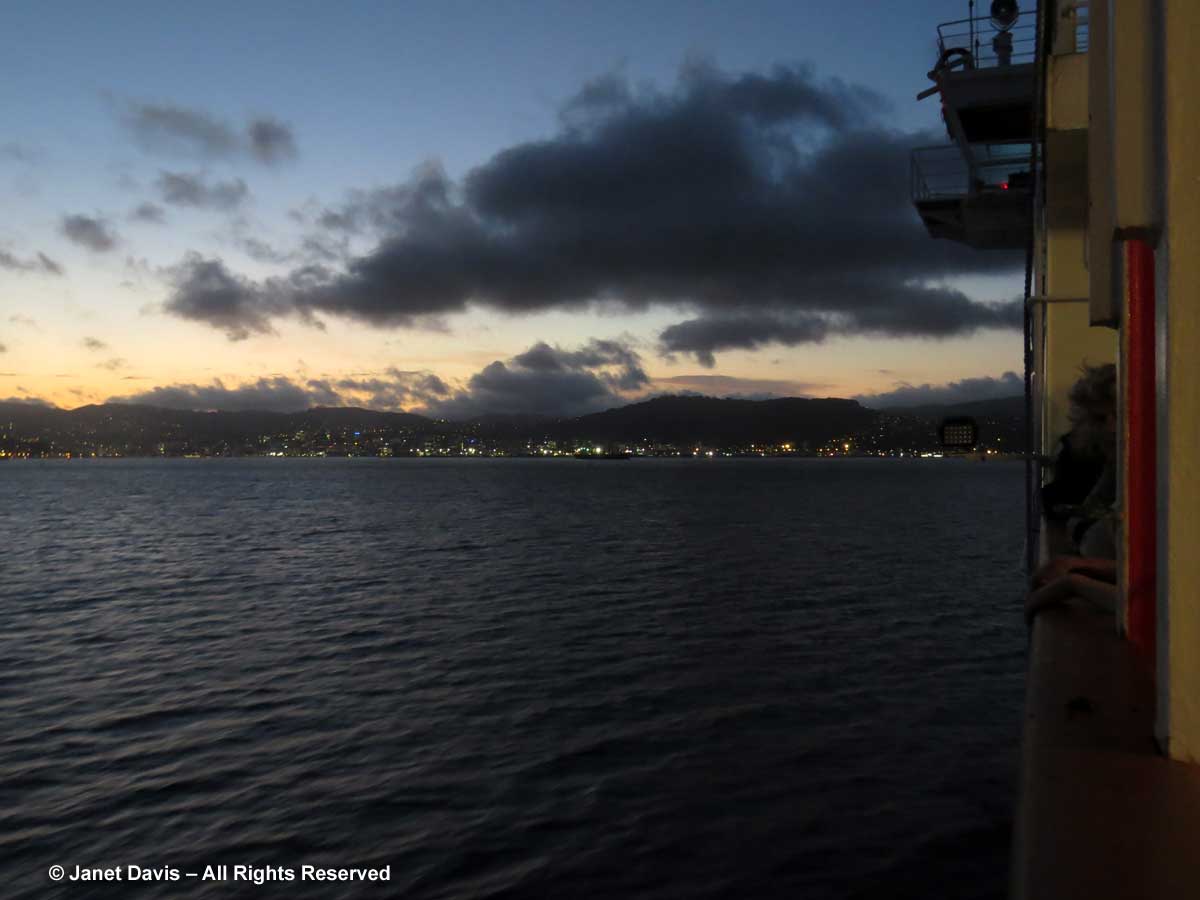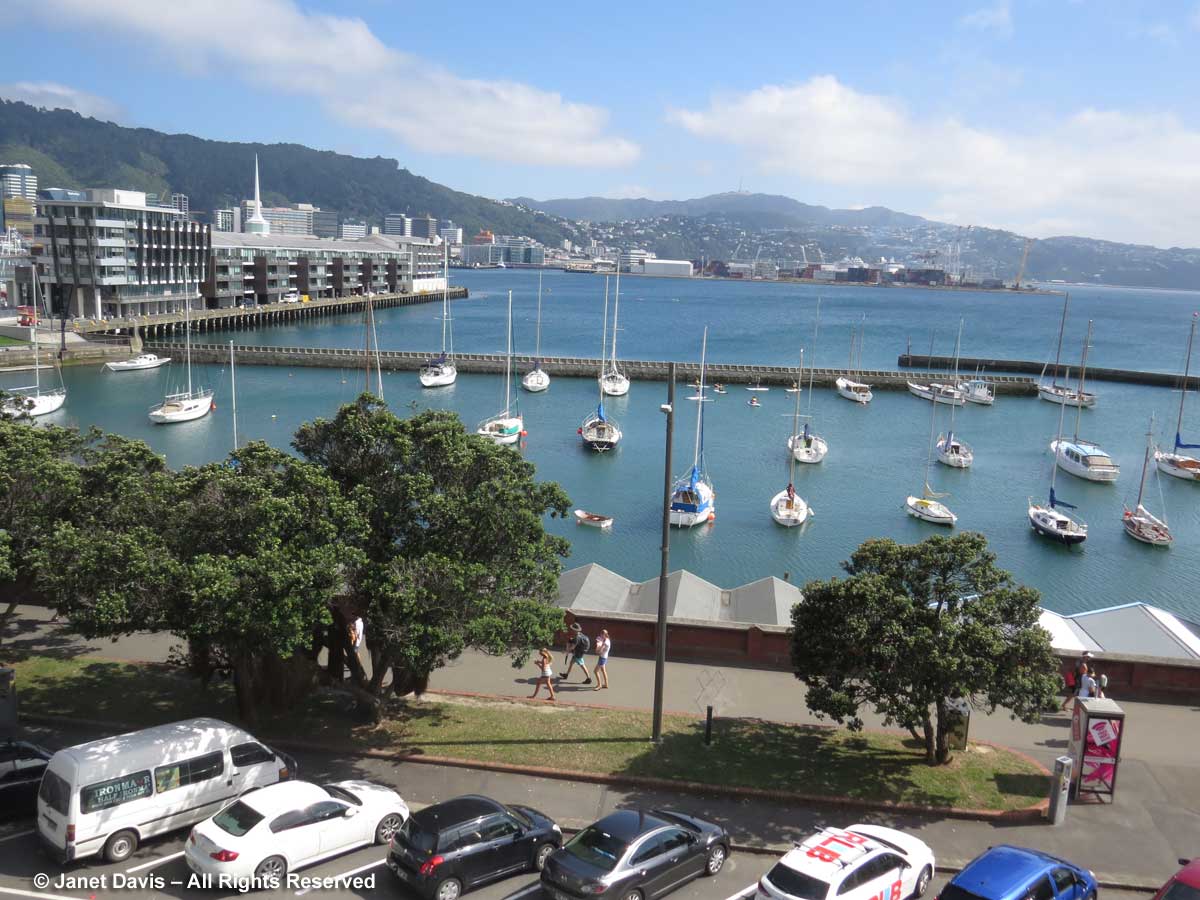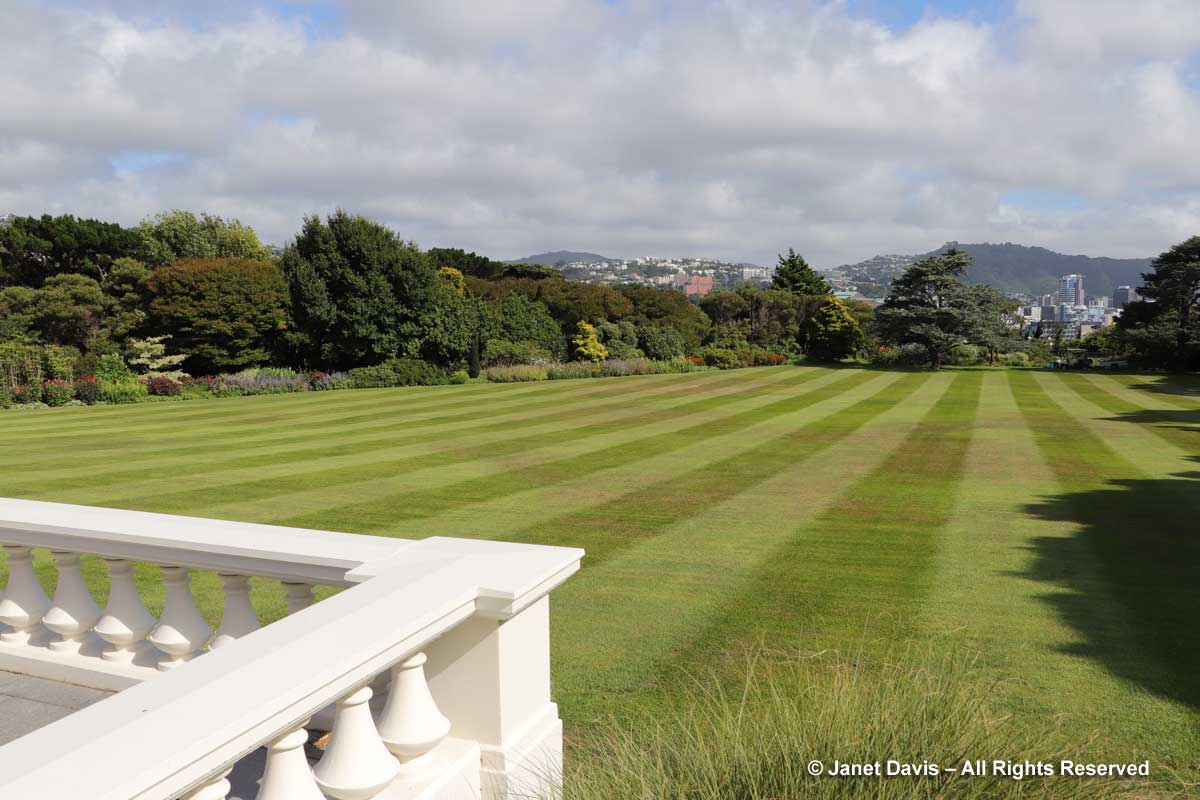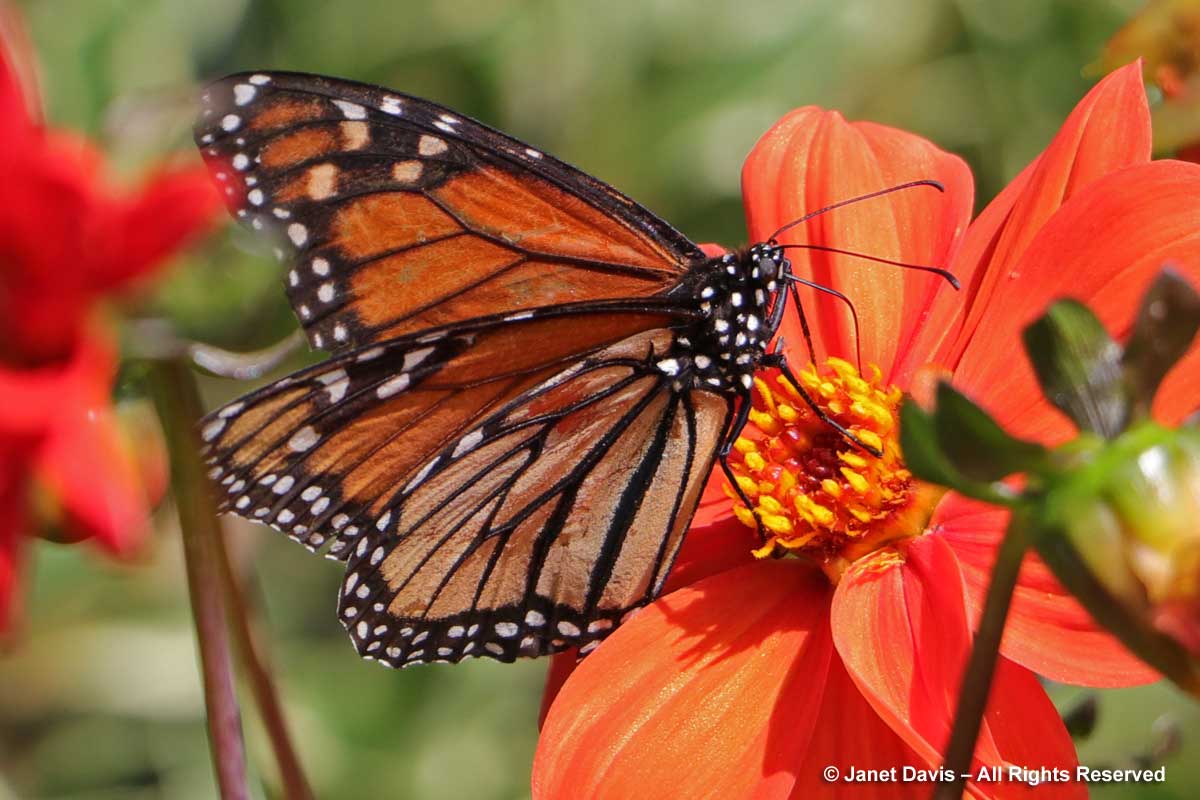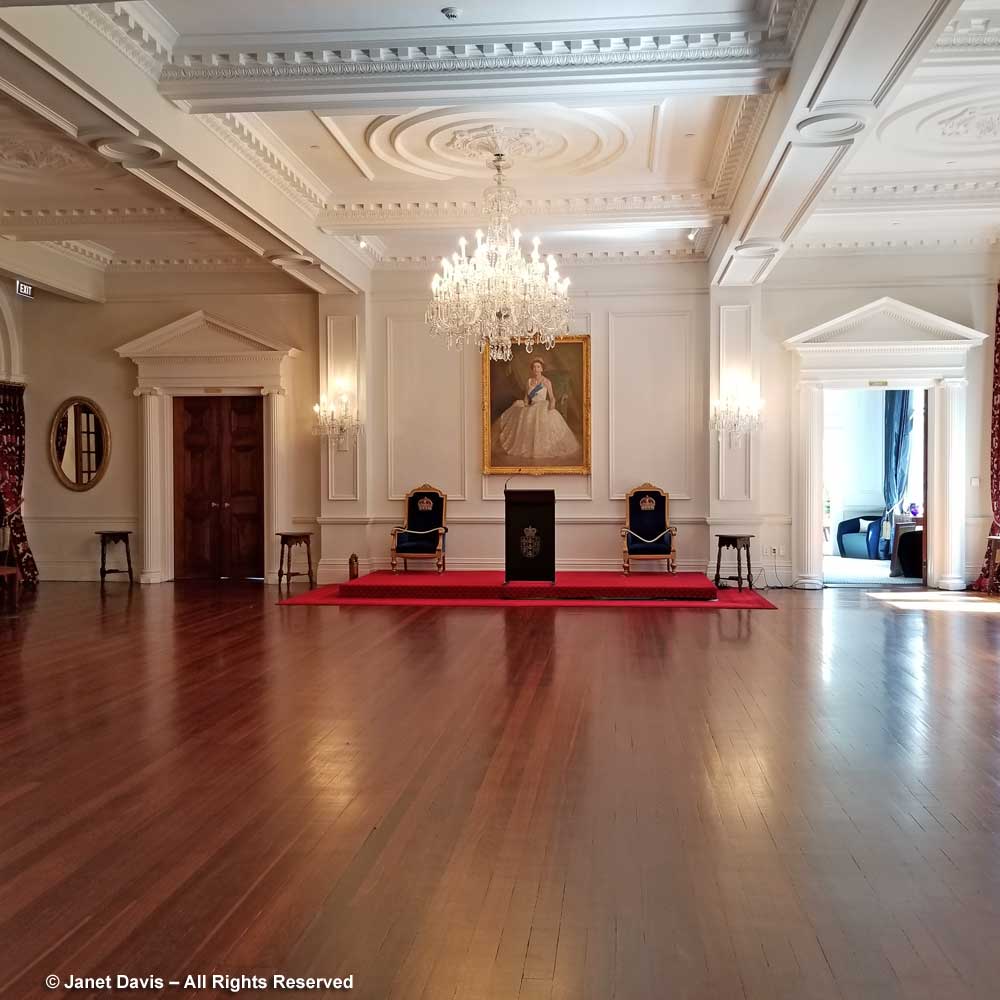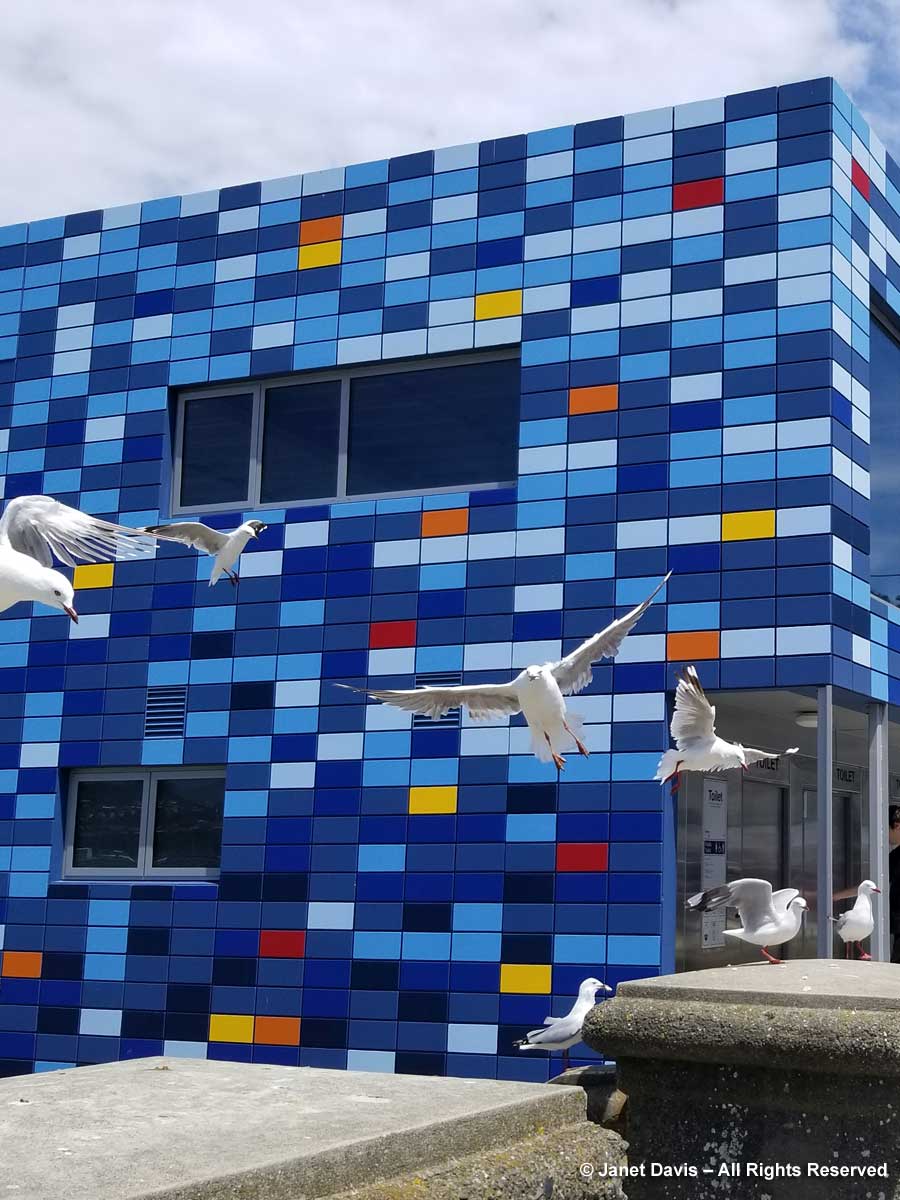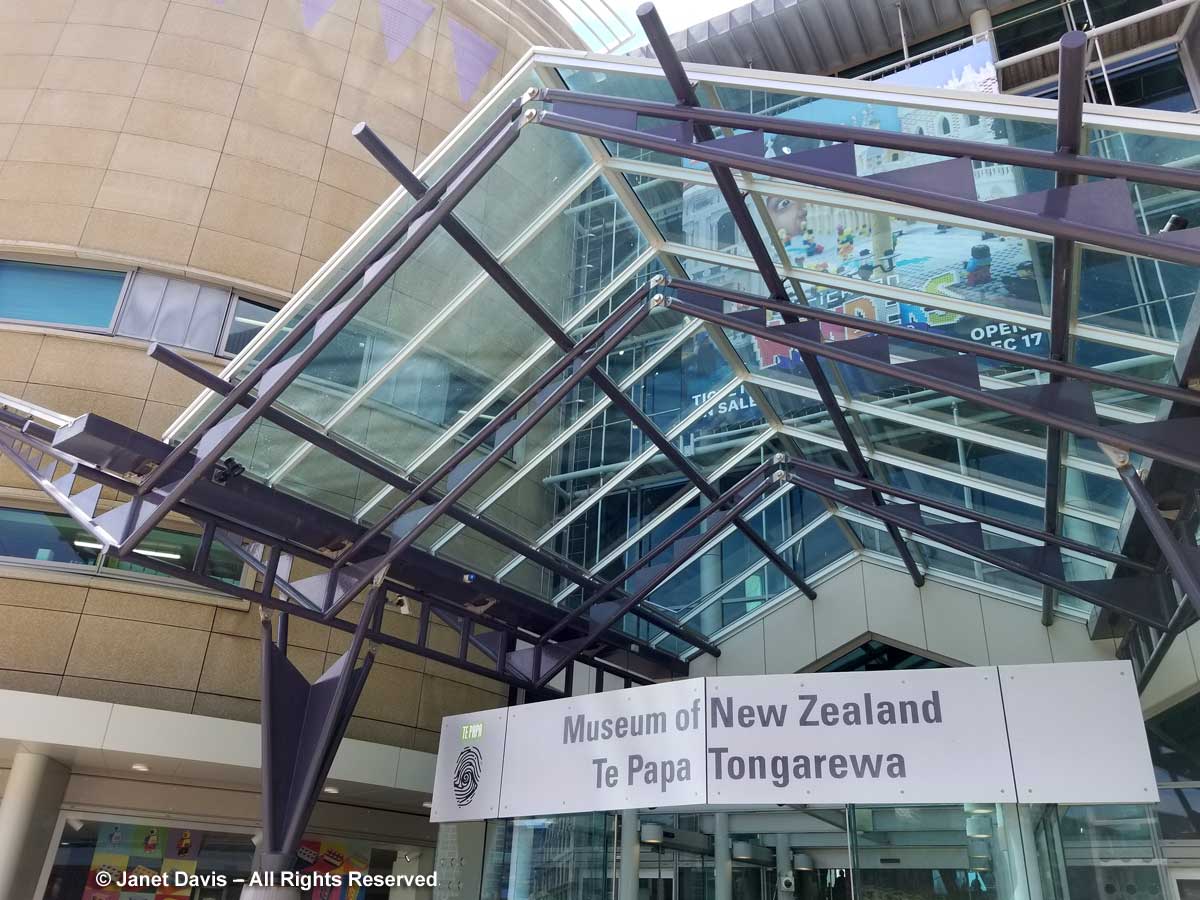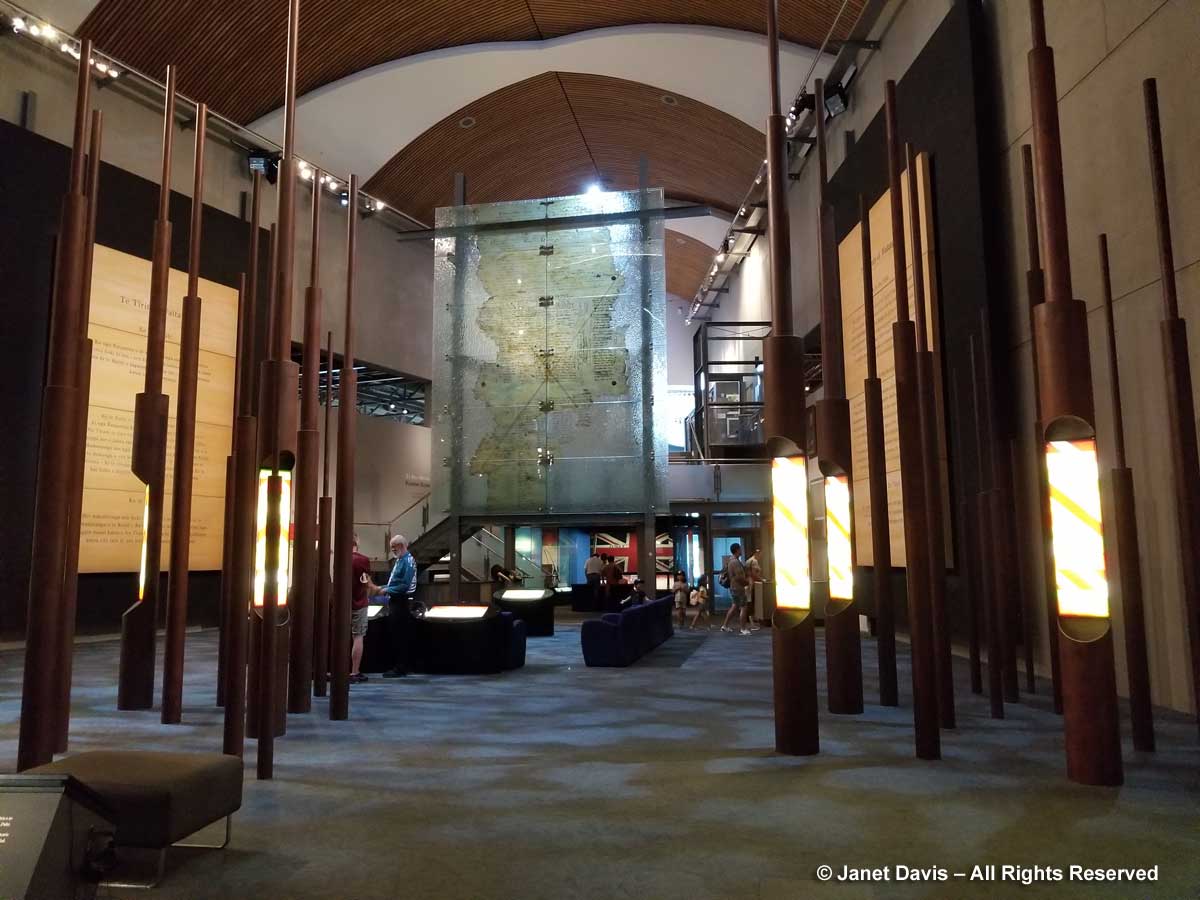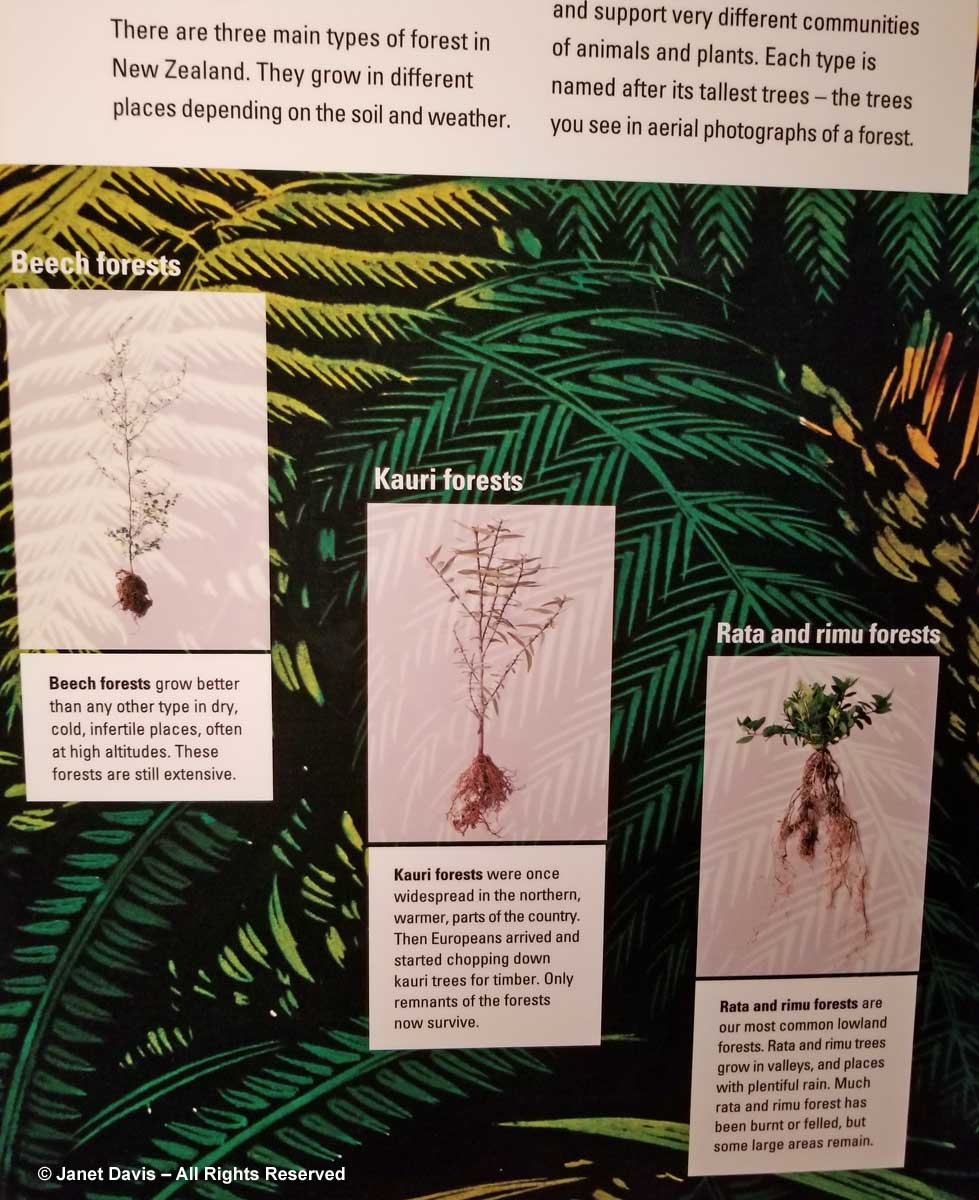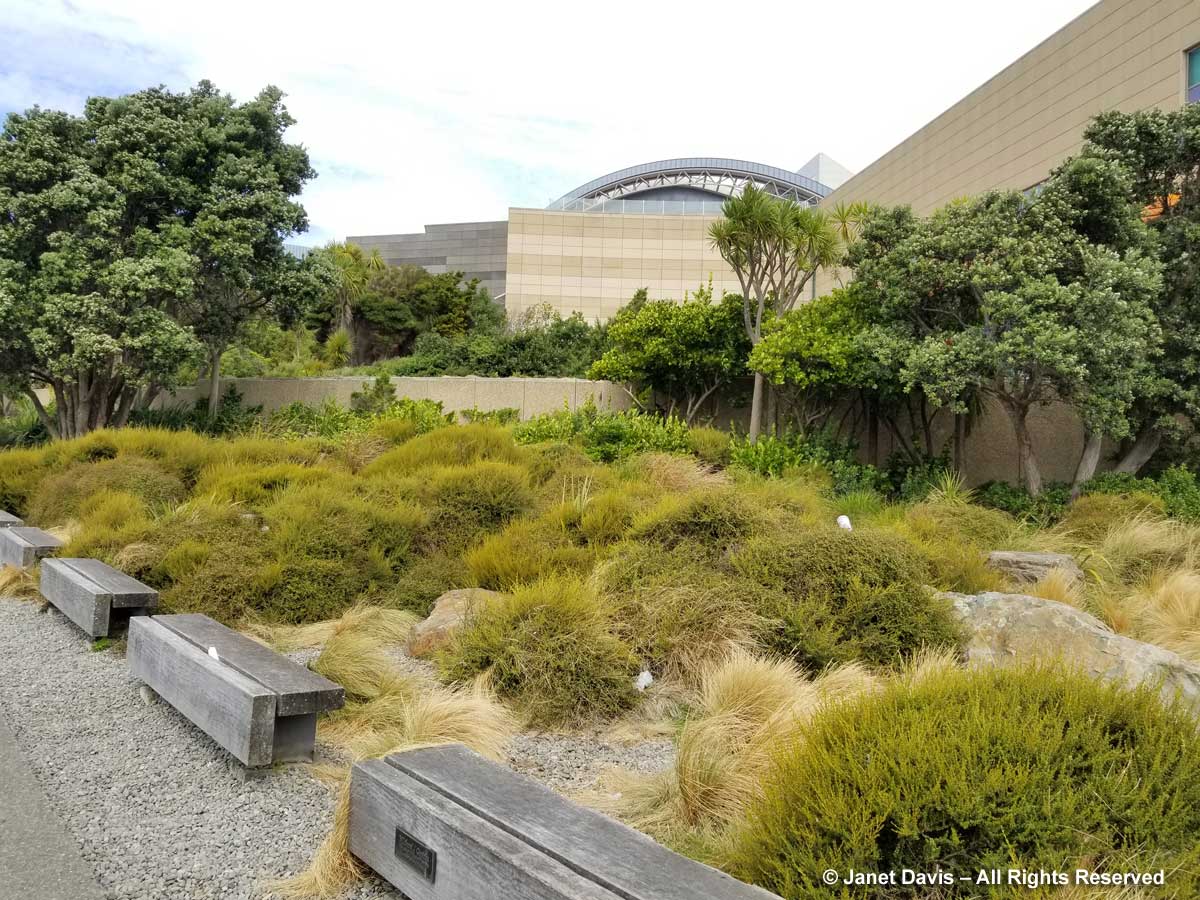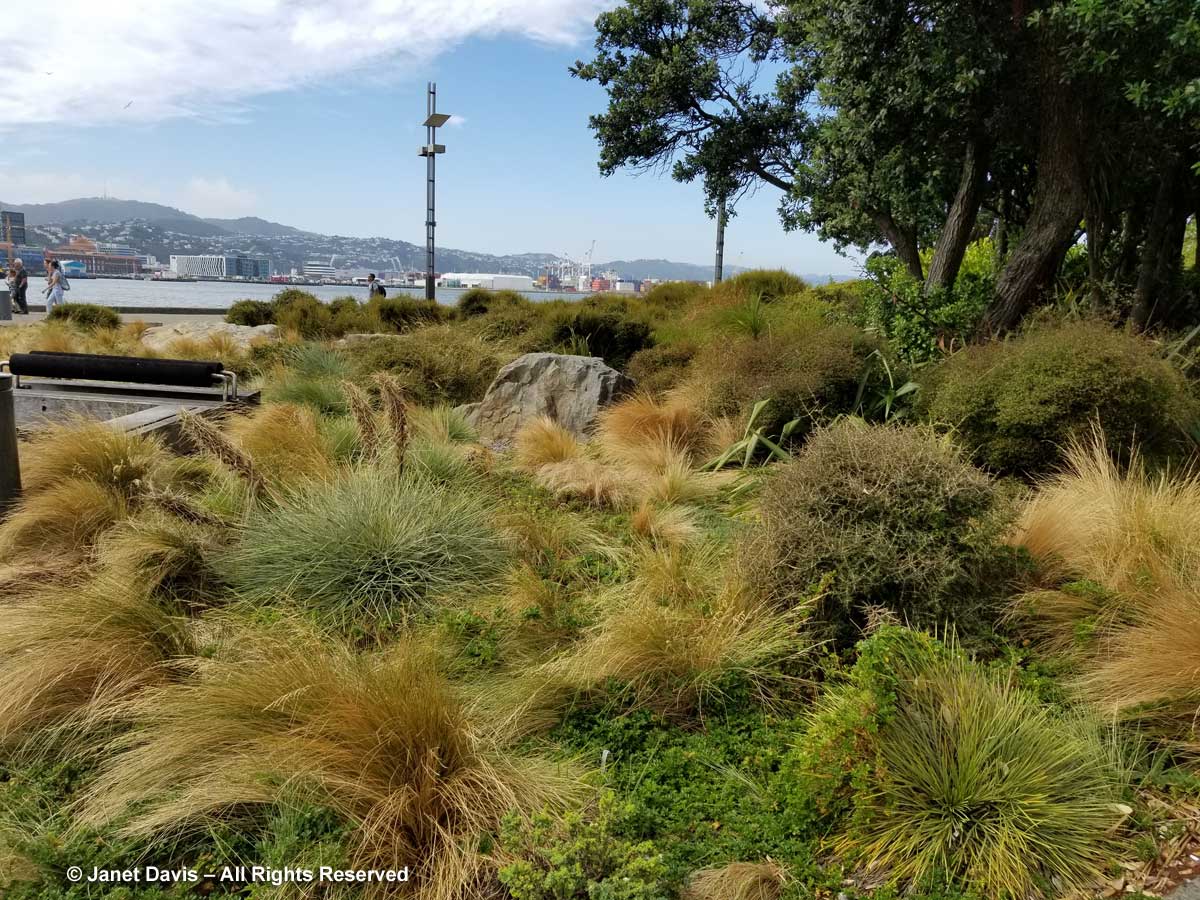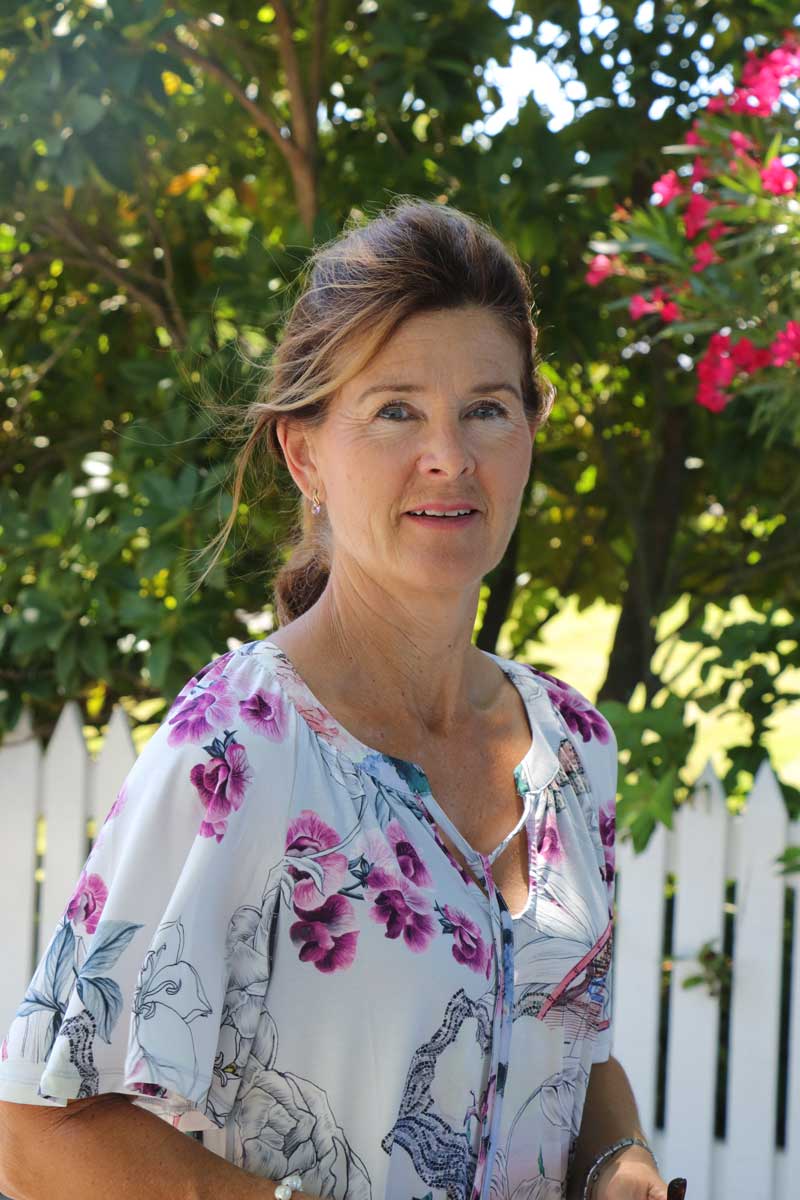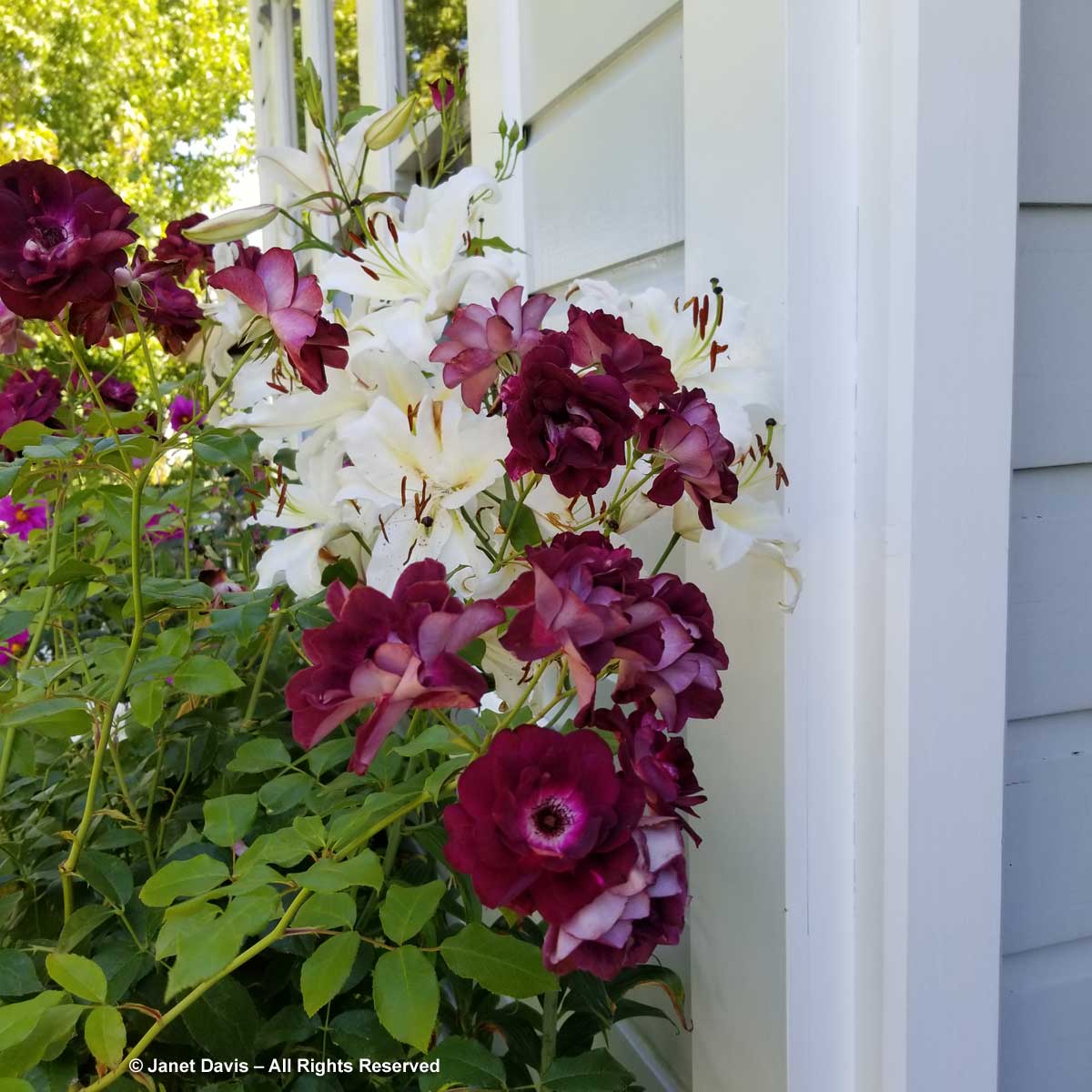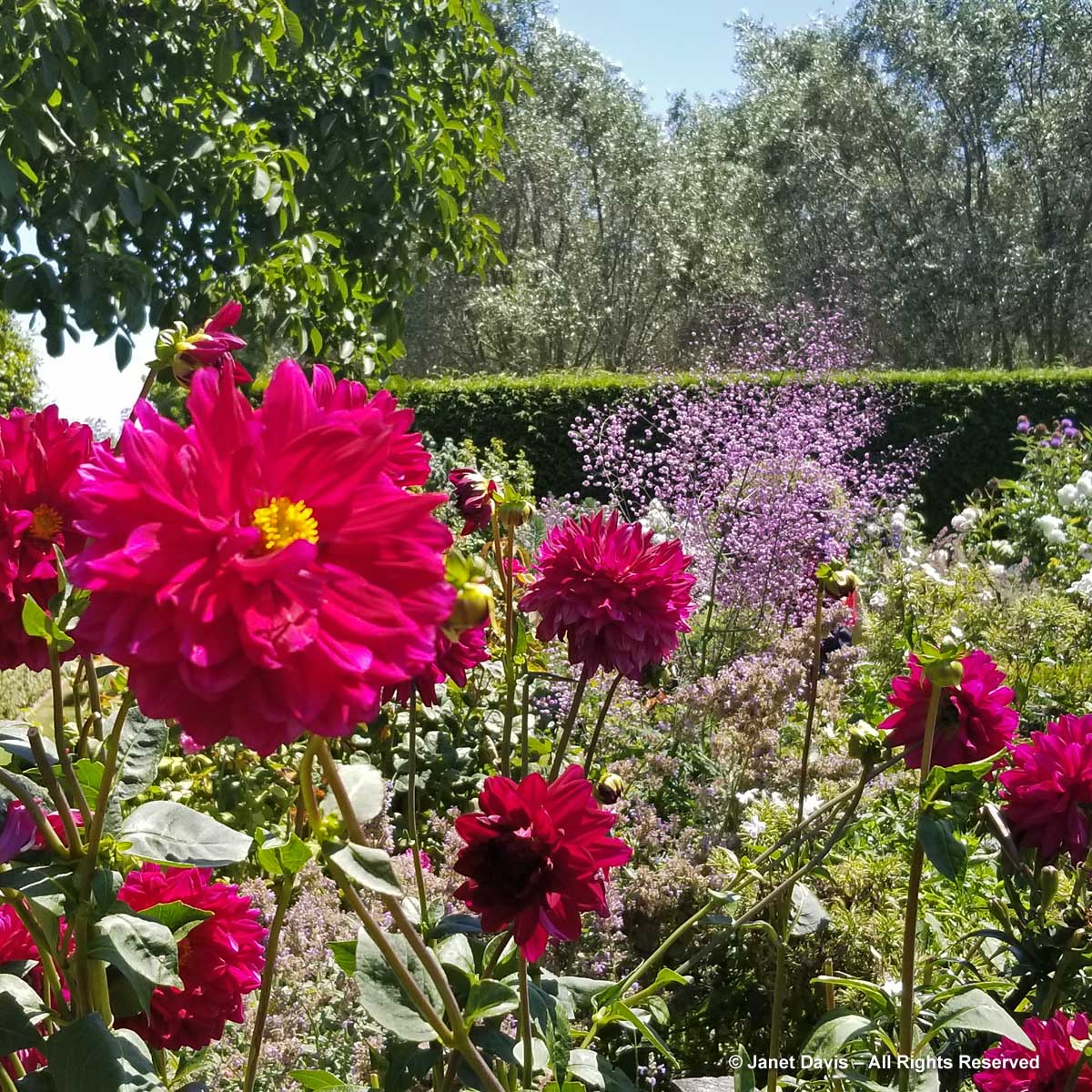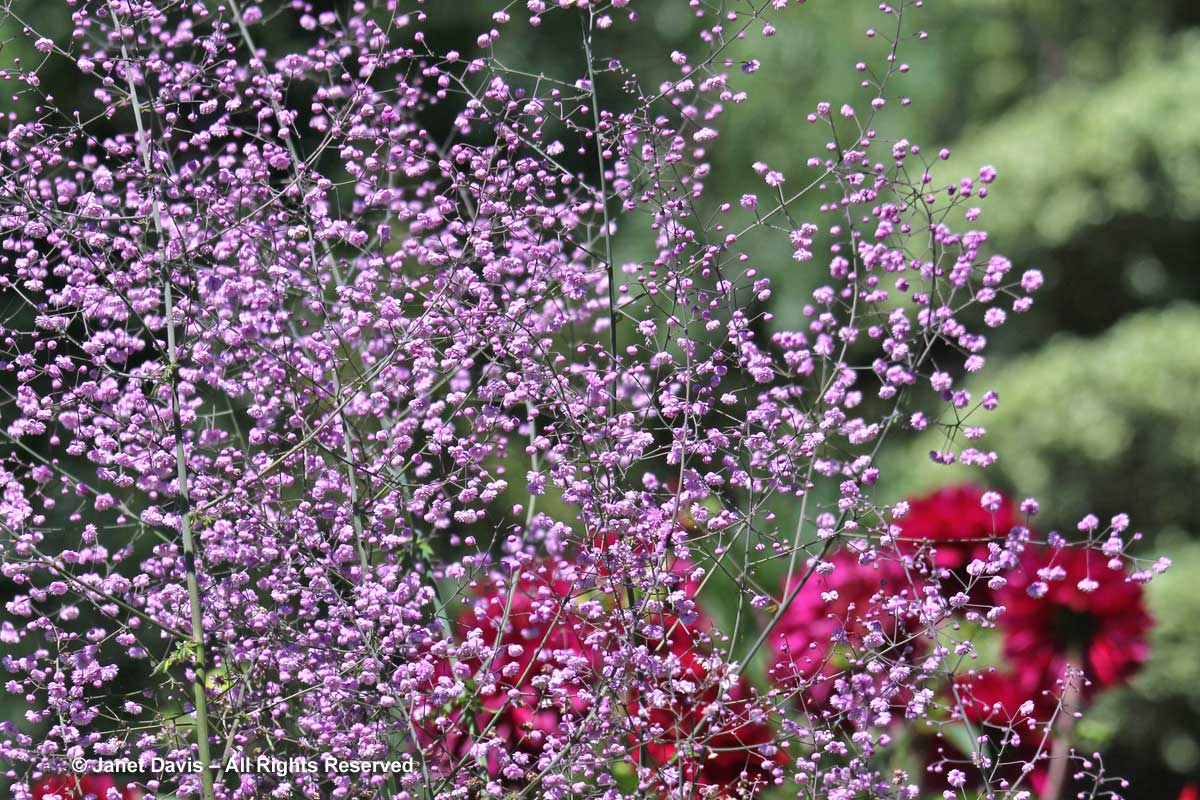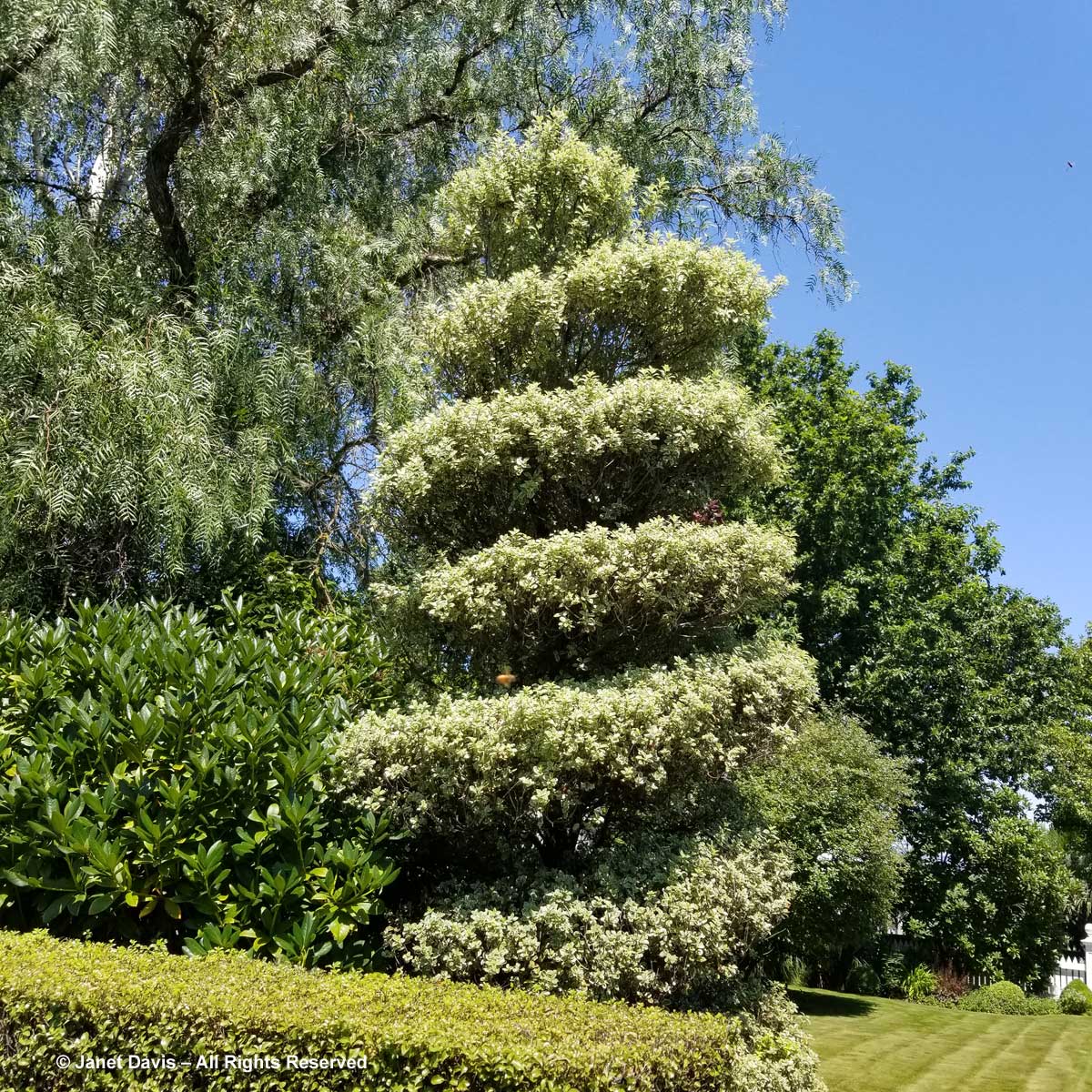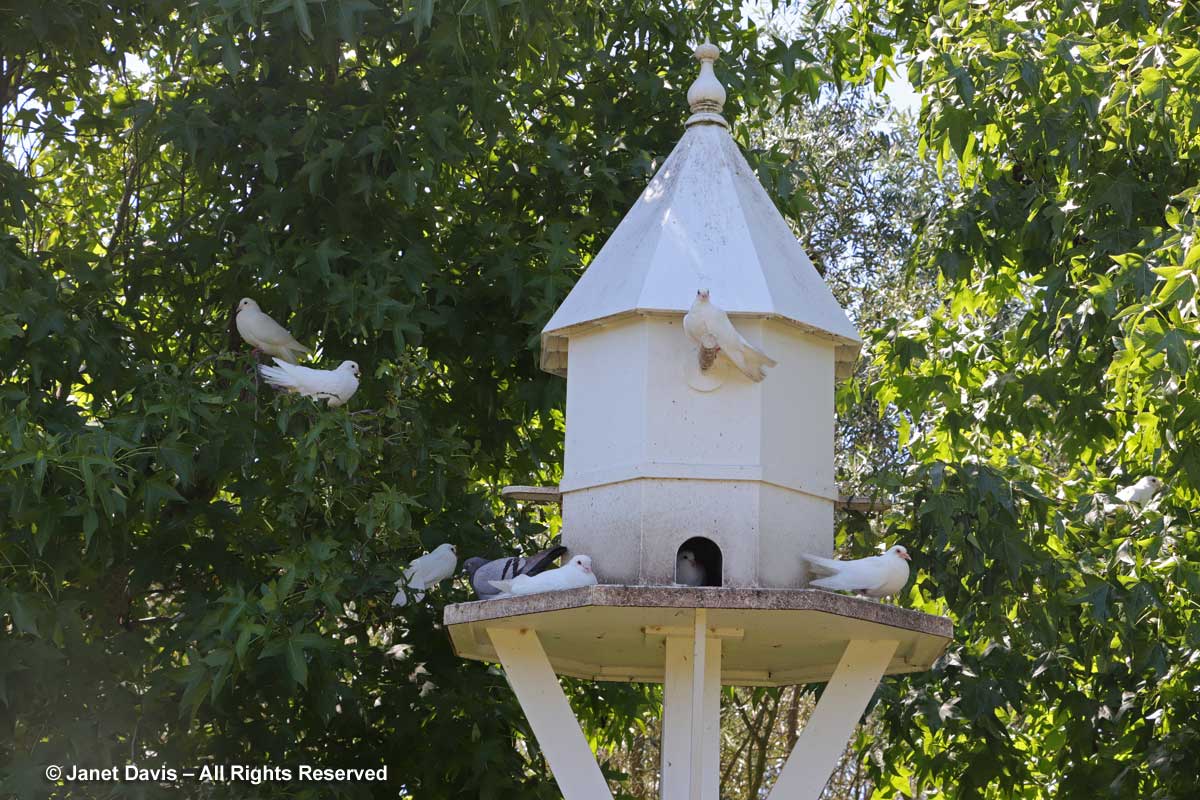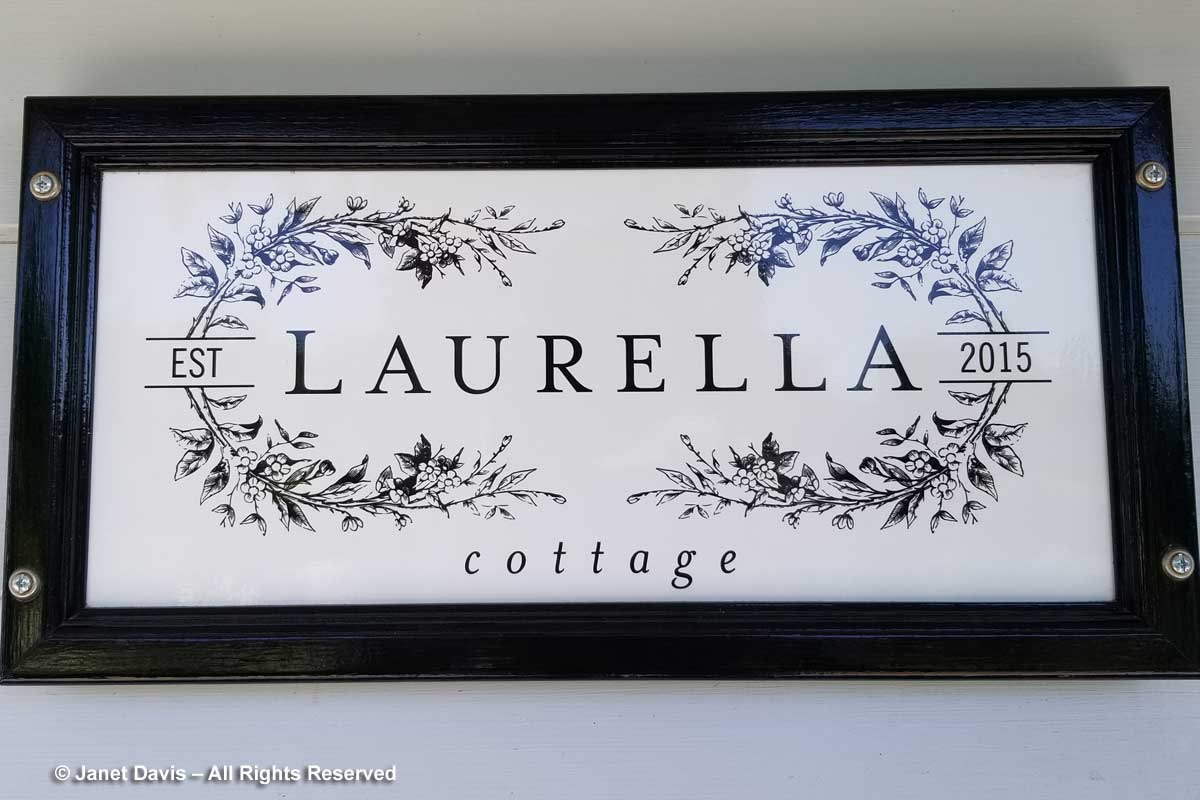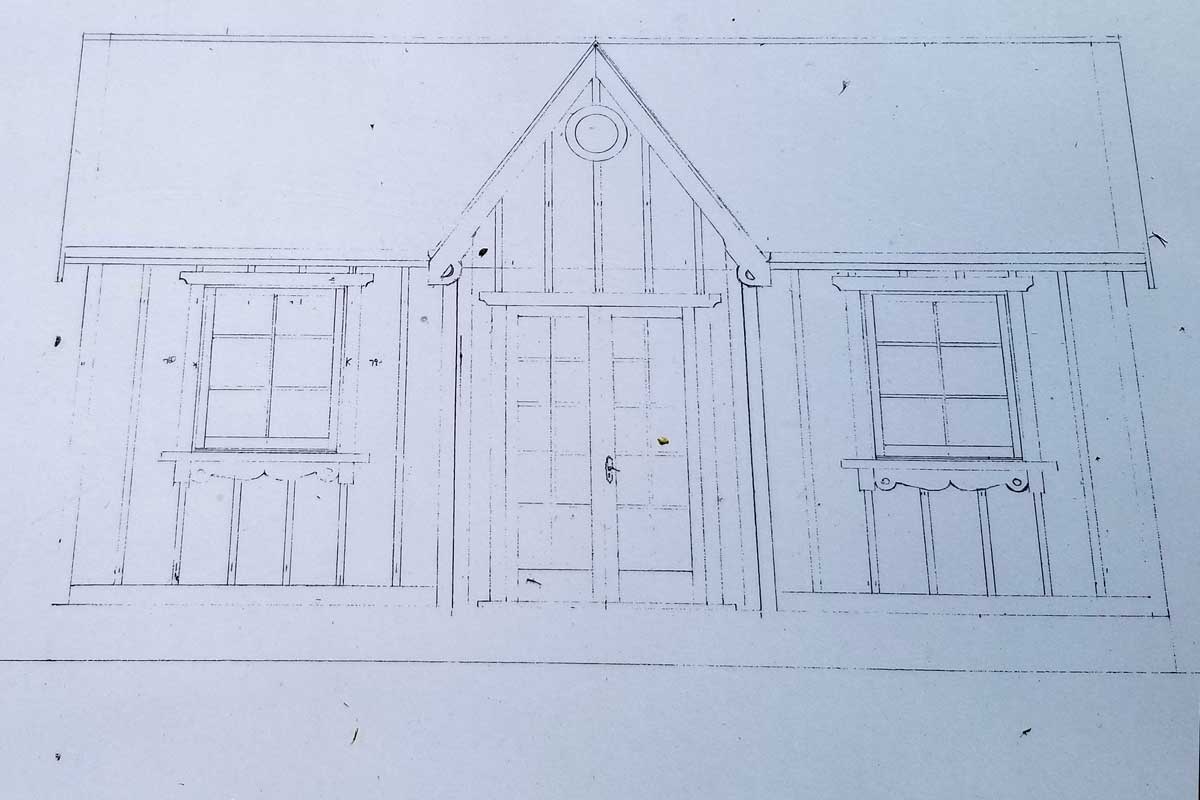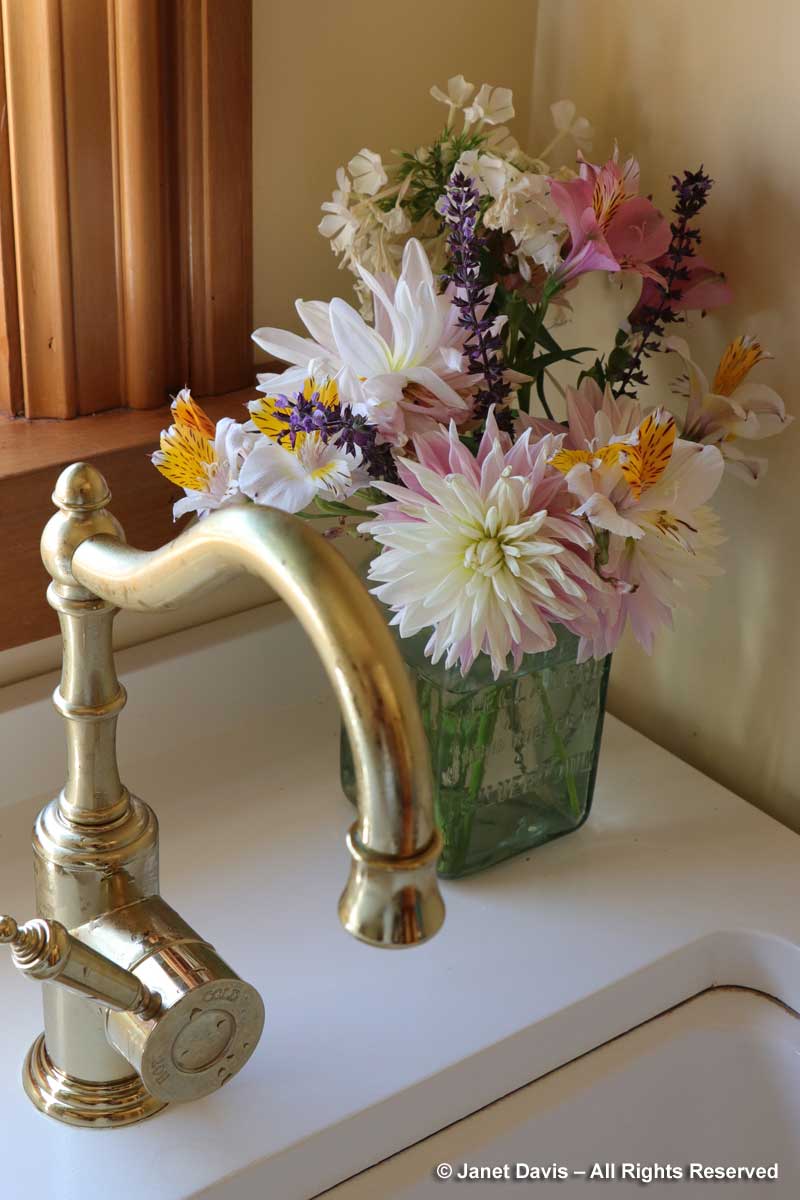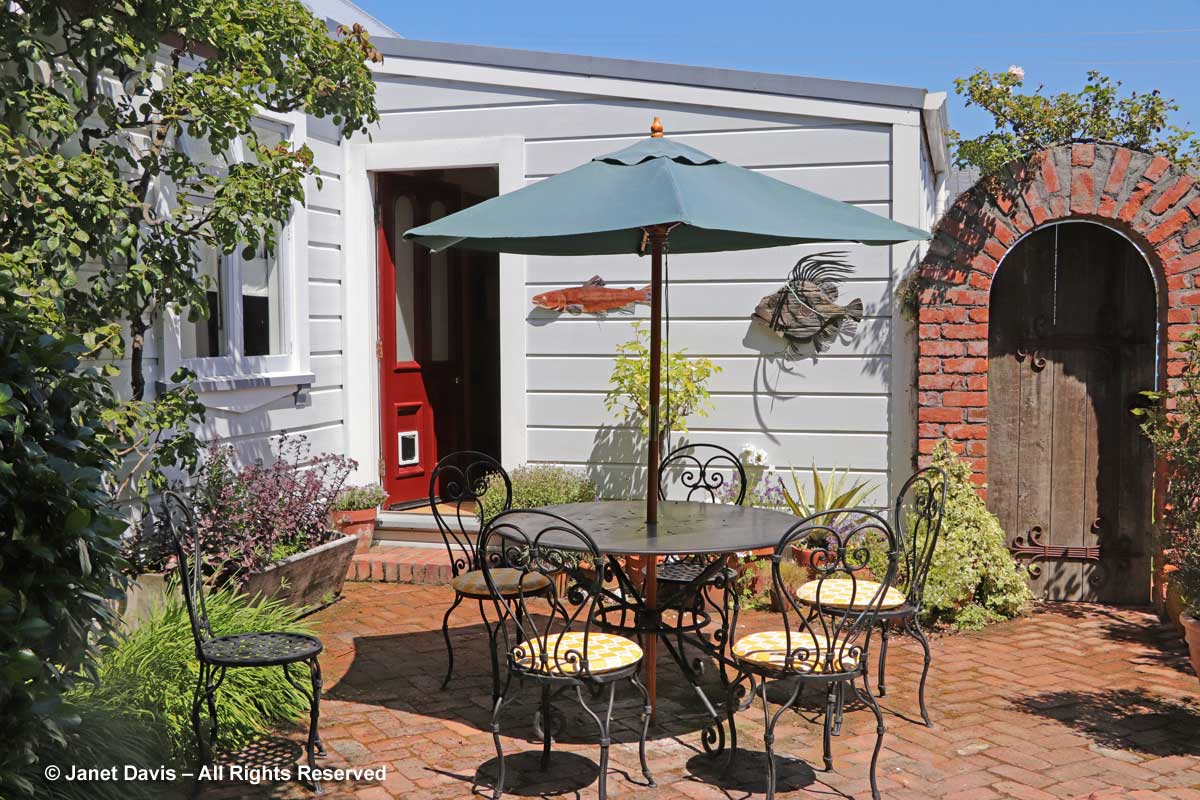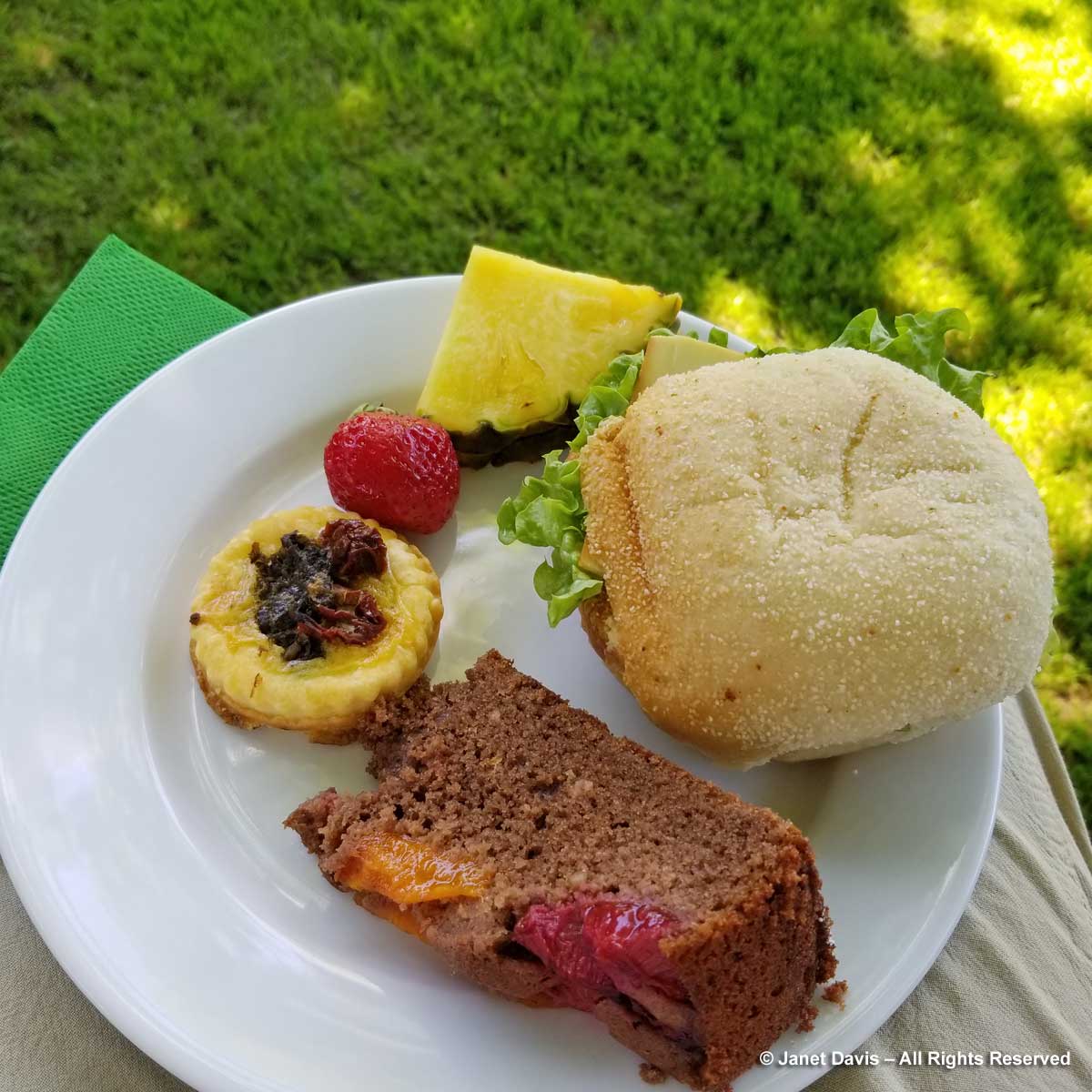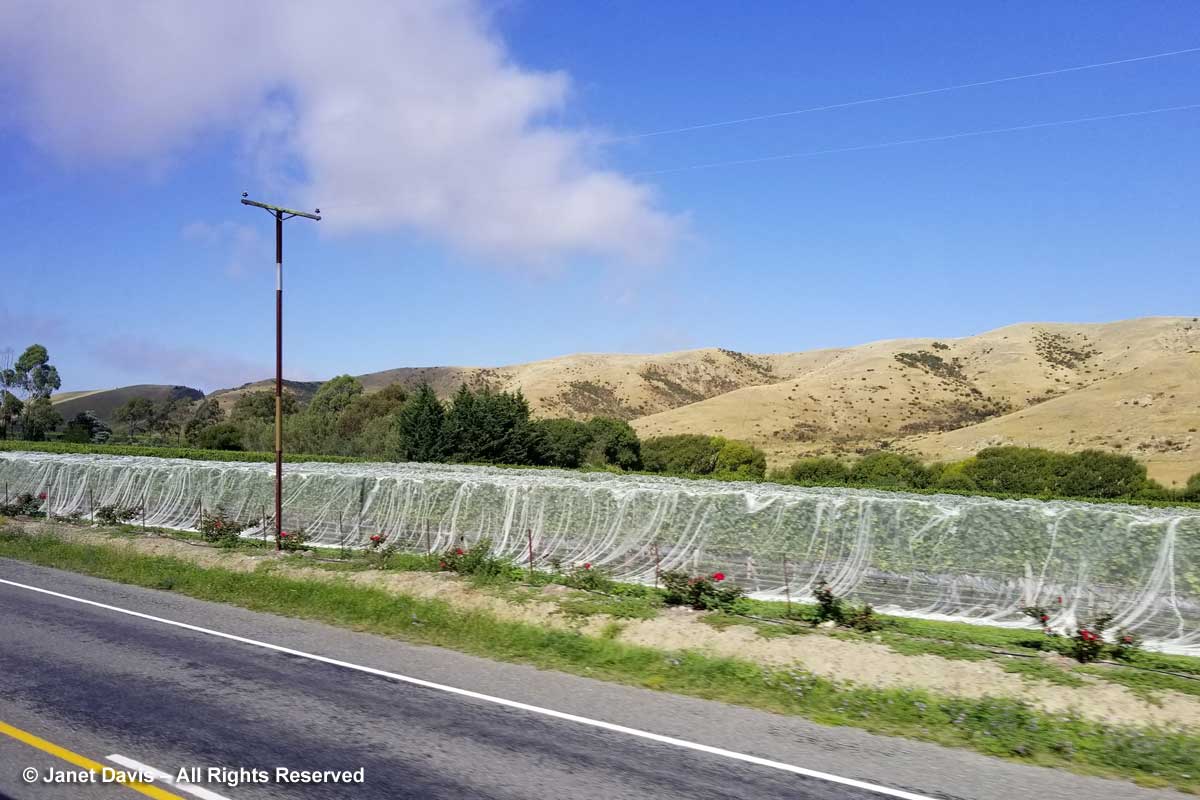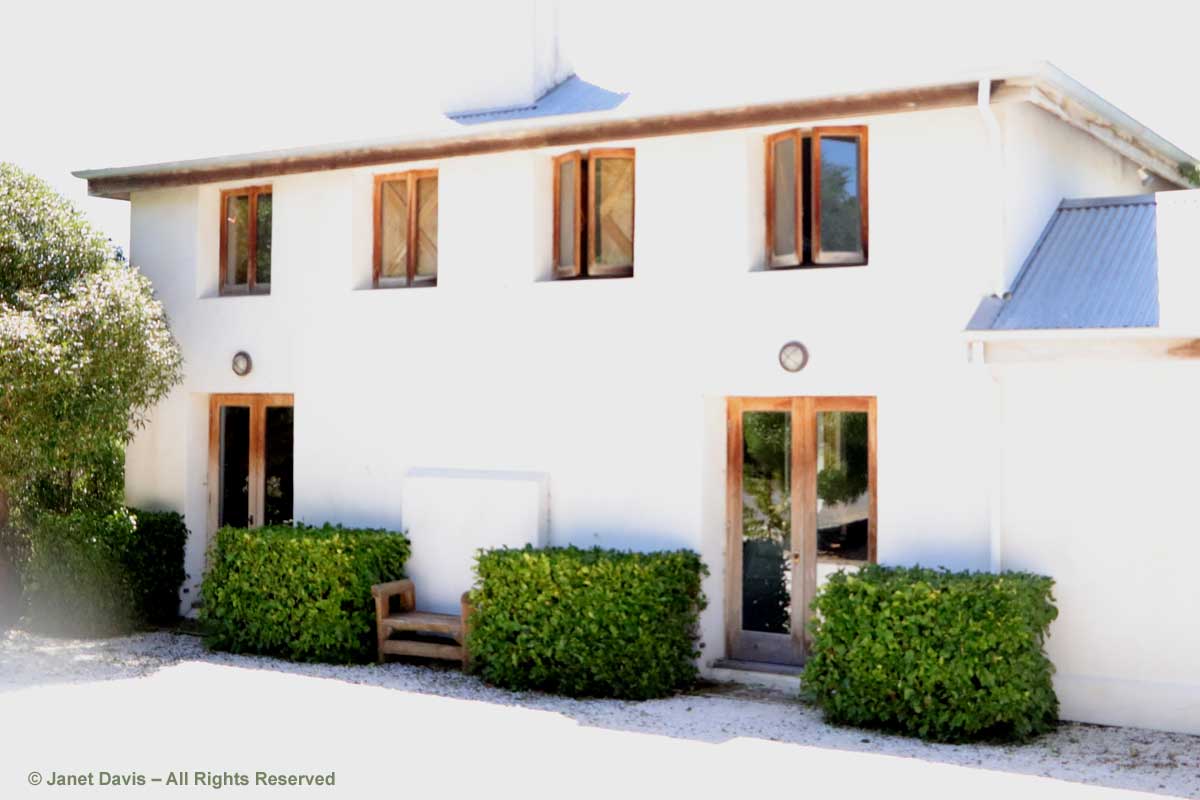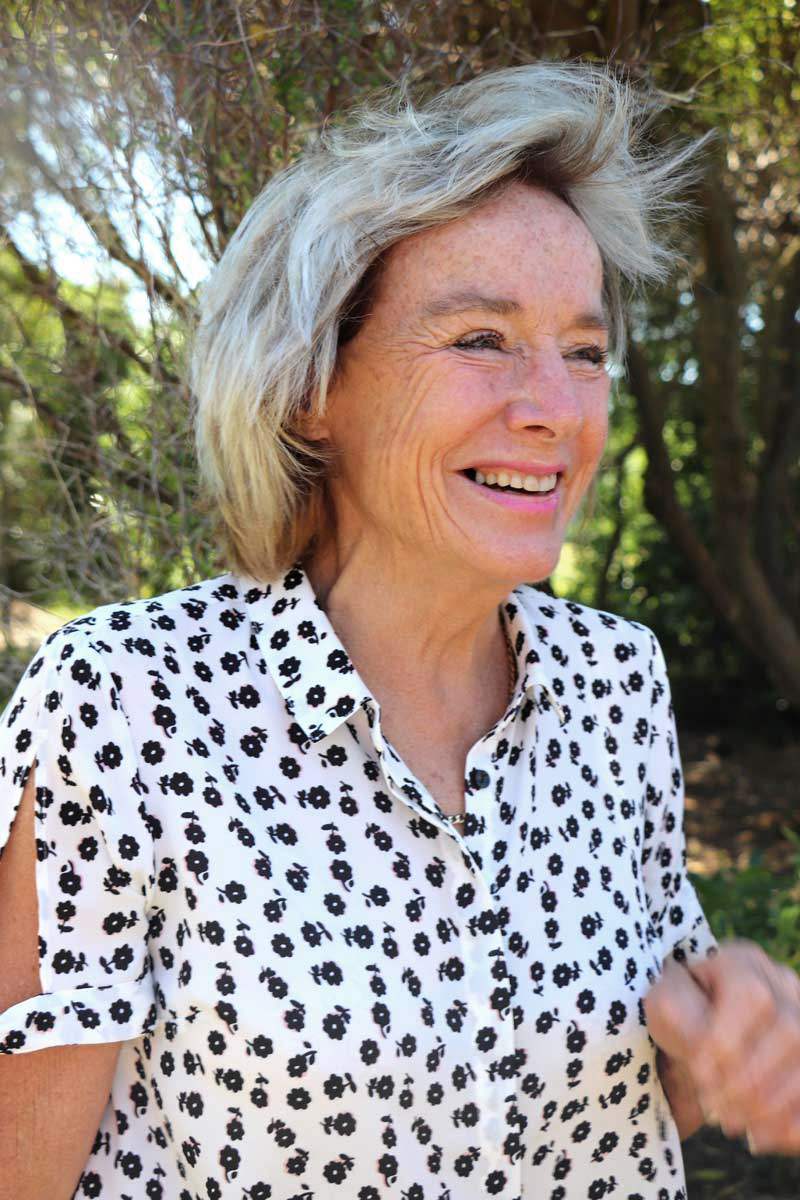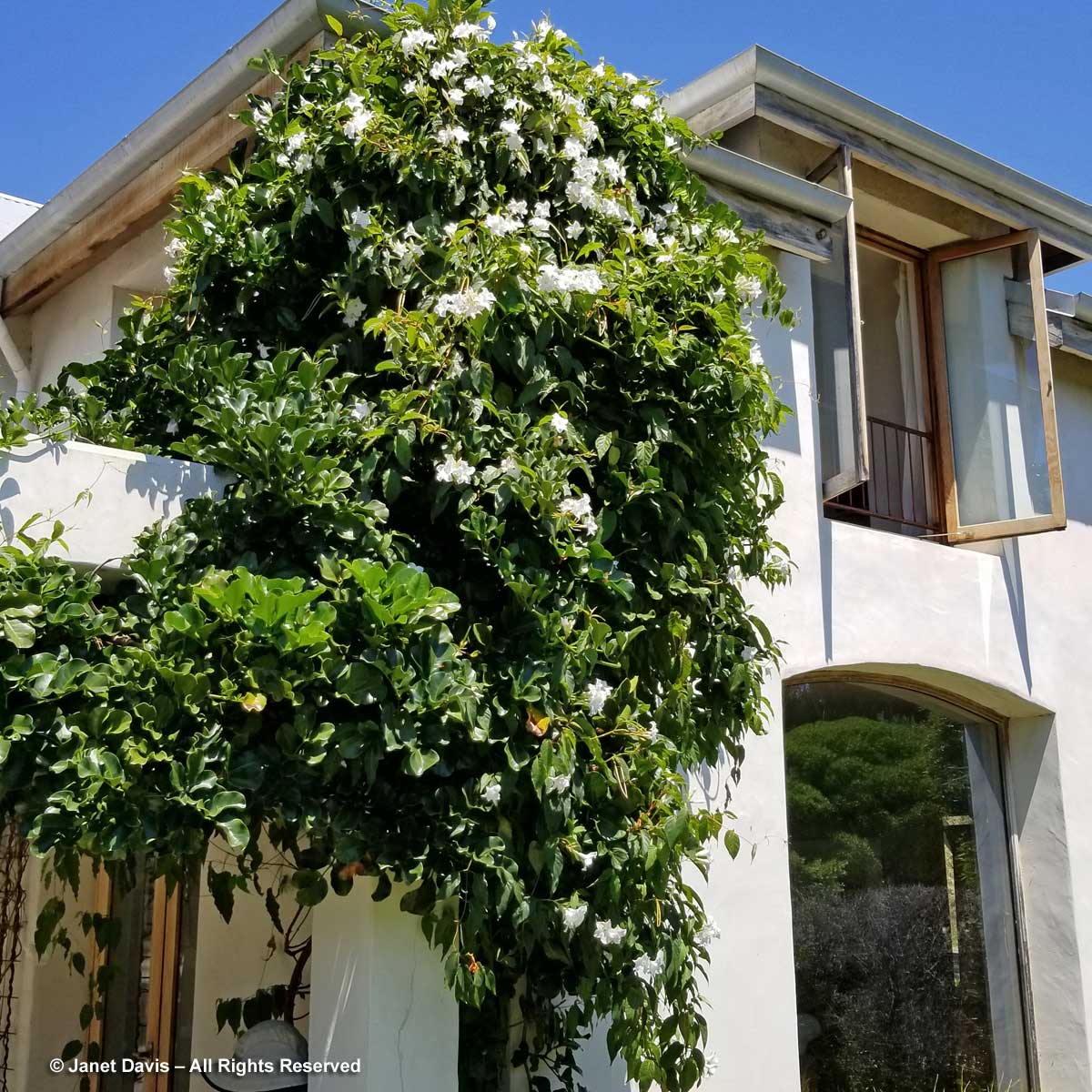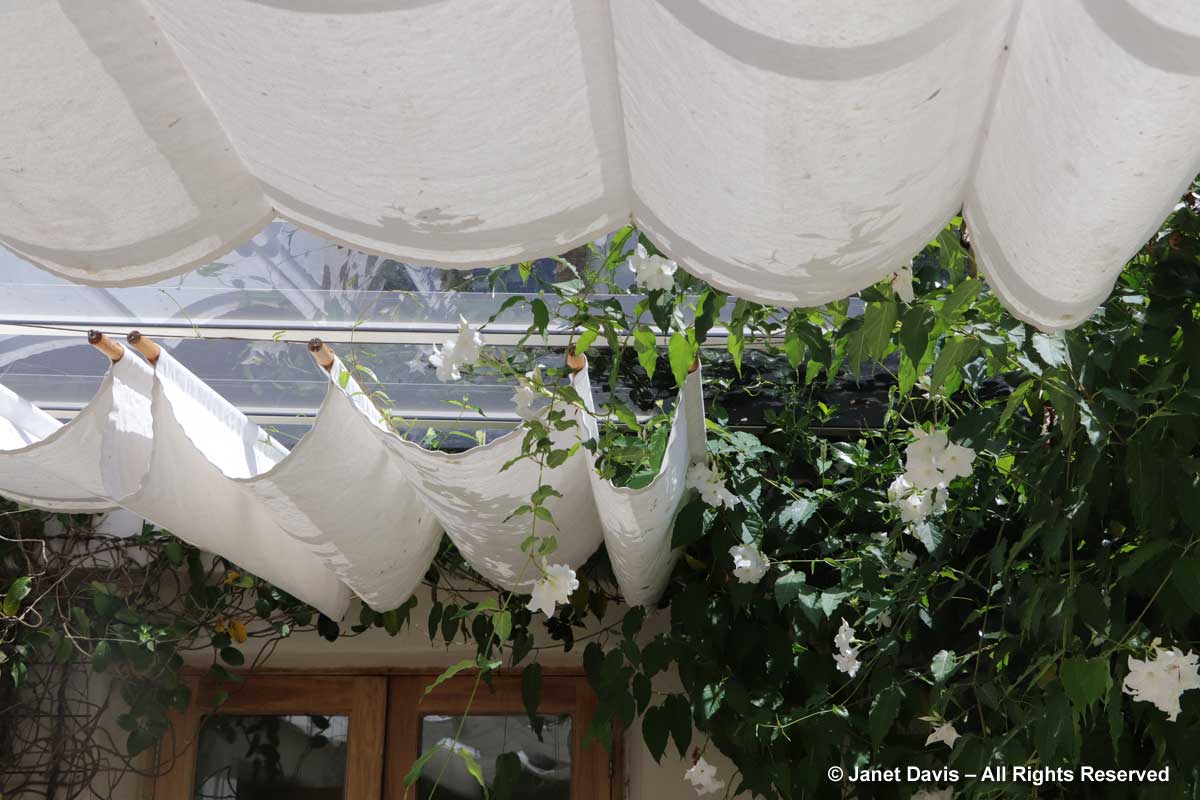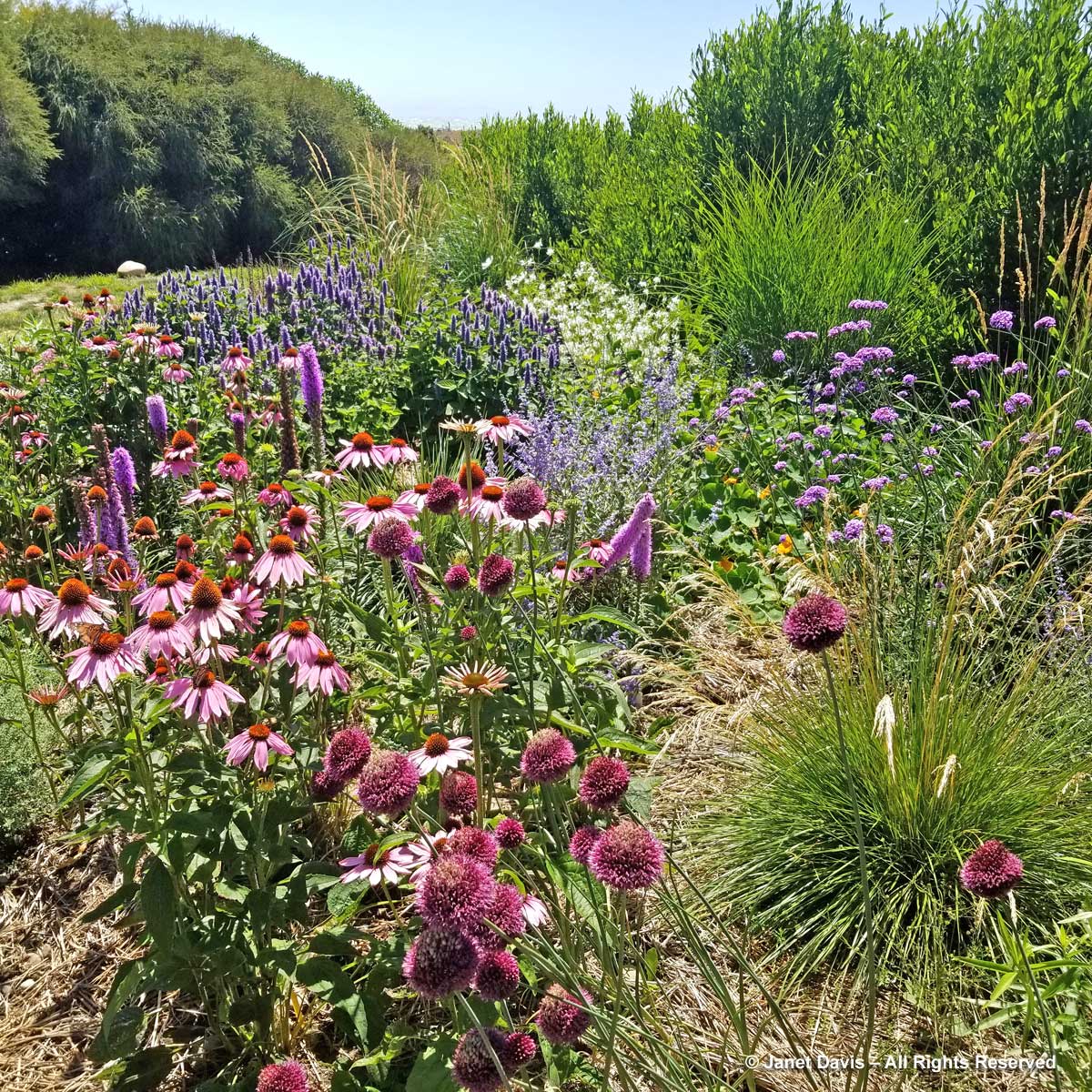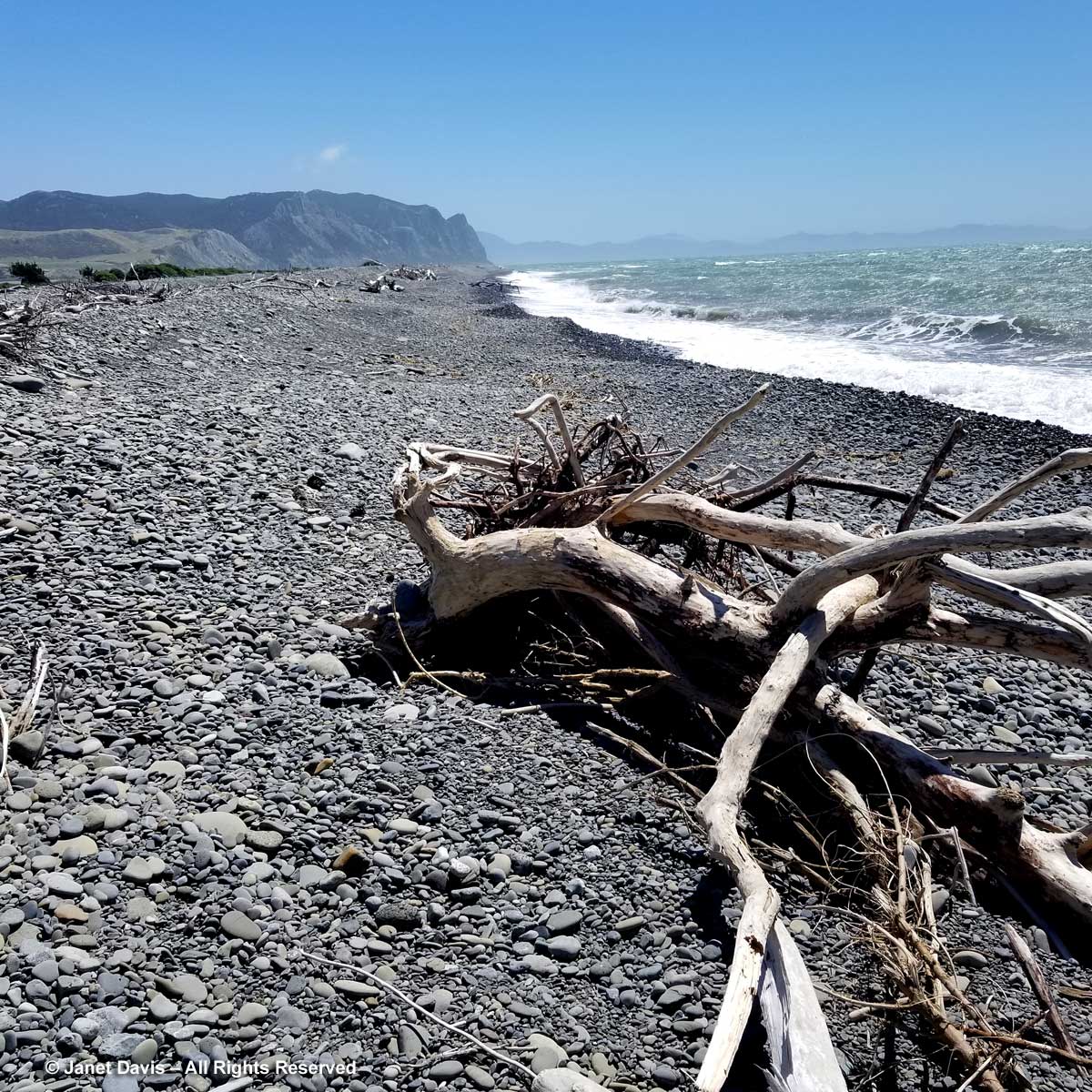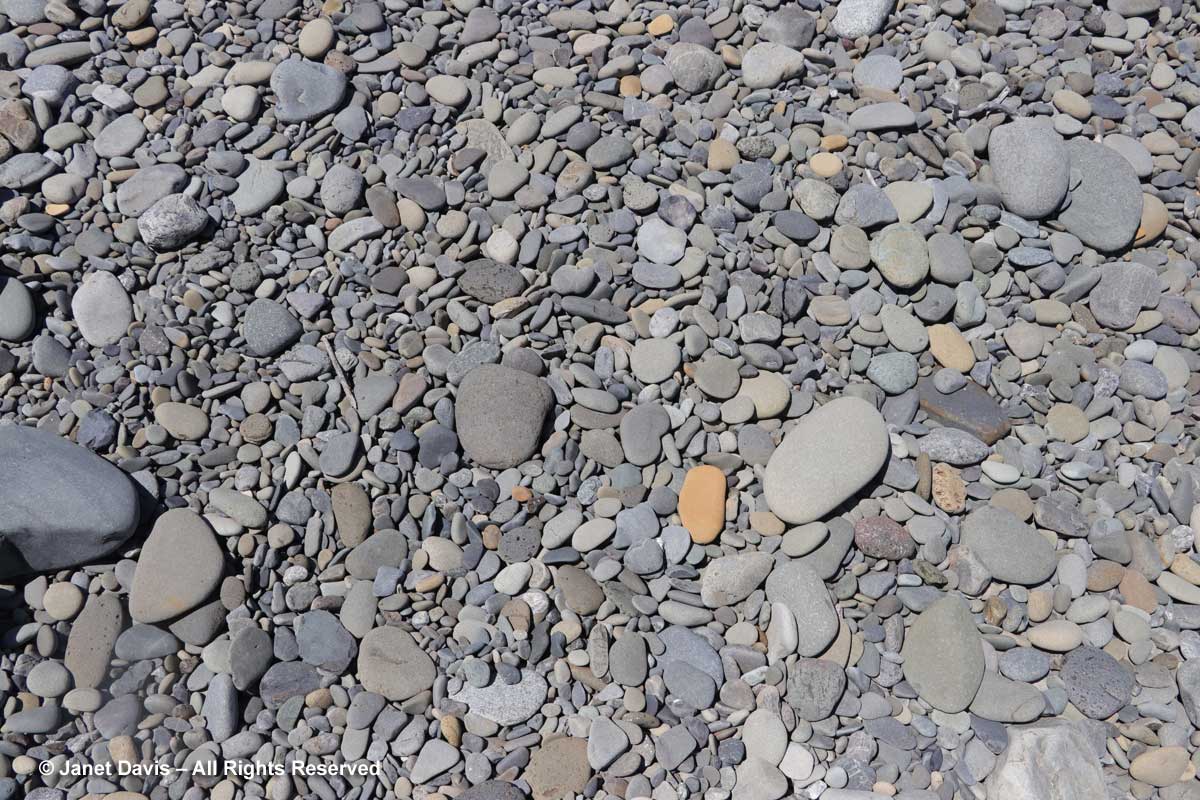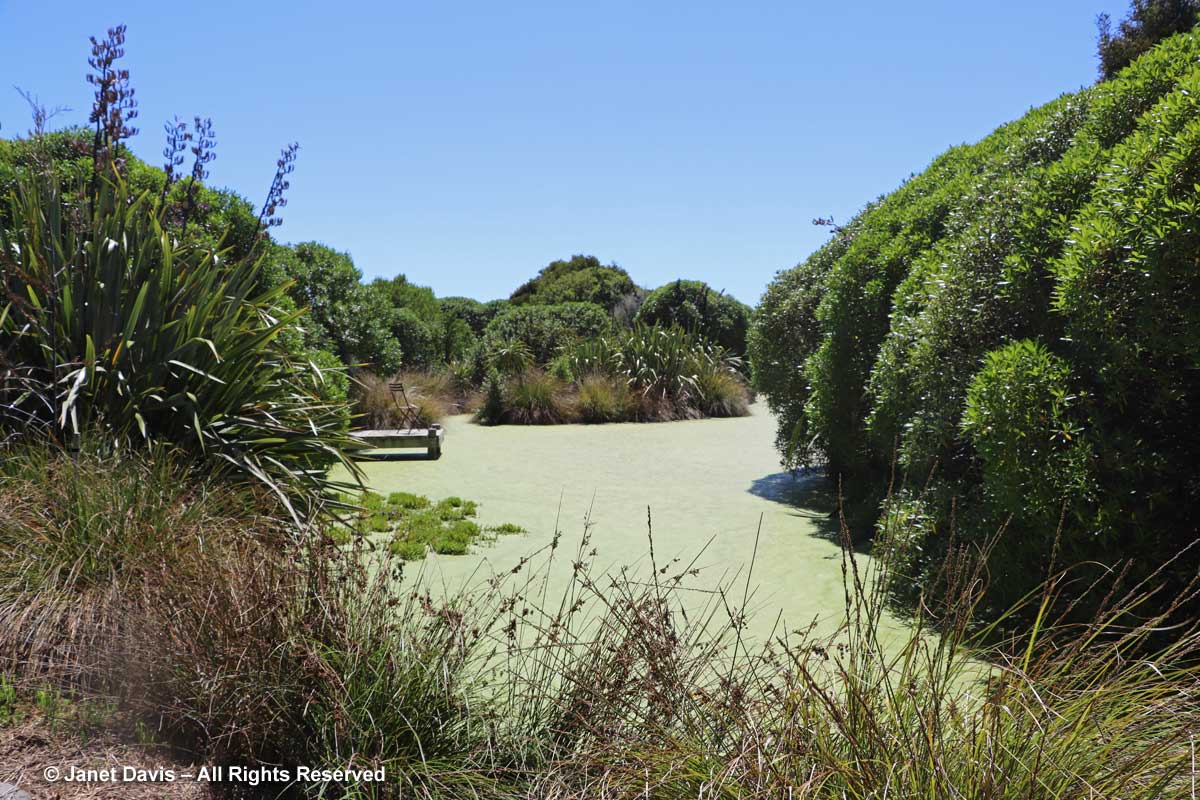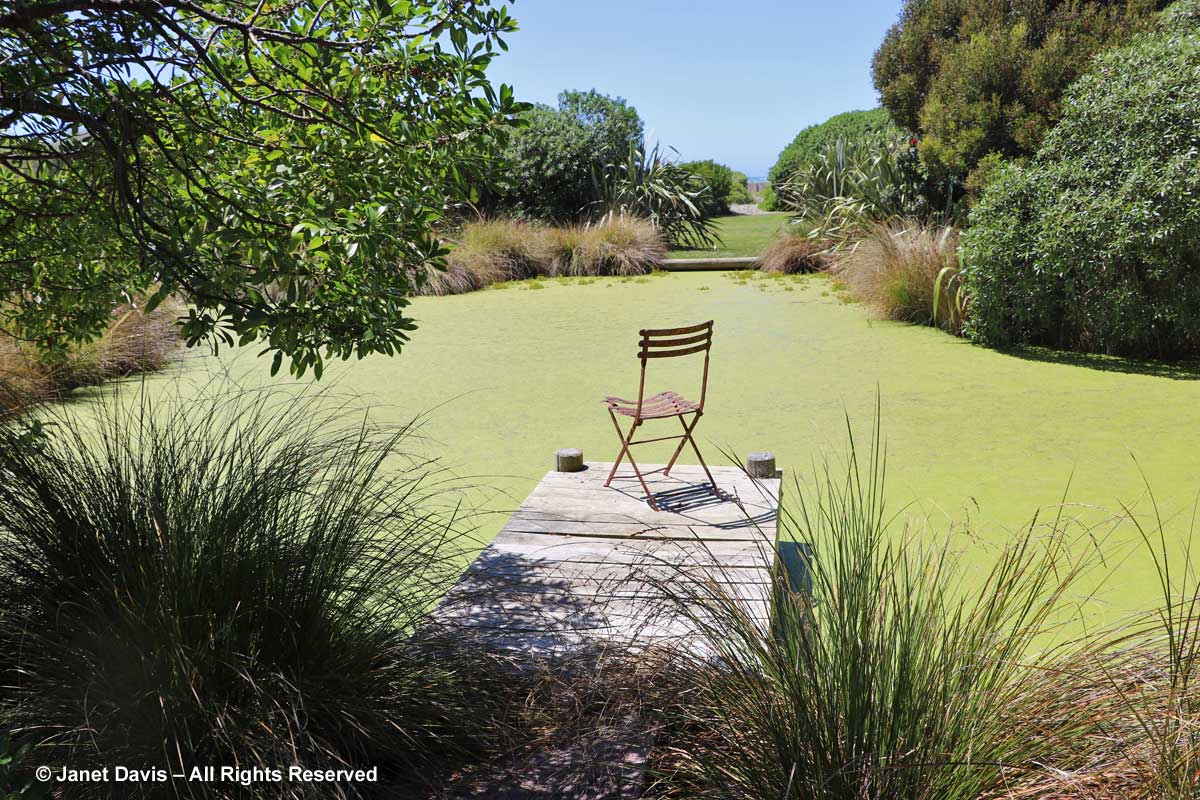In my last few blogs on our 2018 American Horticultural Society tour of the beautiful designed landscapes and natural areas of New Zealand, I wrote about the gardens of the Marlborough region on the South Island. With just a few days left on the tour, we were ready to sail back to the North Island where we had begun more than two weeks earlier. As we waited for the Interislander Ferry to load, we wandered around and window-shopped in the small, picturesque town of Picton. You can see the previous ferry heading out into the Marlborough Sounds.
On board, we sailed out through the tops of green hills which form the fingers of land and islands that are the Marlborough Sounds. If you read my blog on our spectacular overnight stay in Doubtful Sound at the southeast tip of the South Island, you’ll see the difference between these hillsides, which are often cloaked in invasive conifers referred to as ‘wilding pines’, and those on Doubtful Sound, which were cloaked in a variety of native tree ferns and evergreen trees and shrubs.
The Marlborough Sounds are known in geology as drowned river valleys. Eighty-five million years ago, New Zealand broke away from the supercontinent Gondwana, which also included Africa, India, South America, Antarctica and Australia. This drifting body of land about the size of half of Australia, called Zealandia, subsided almost entirely into the Pacific Ocean. Thirty-five million years ago, Zealandia was less than one-third the size of modern New Zealand and occurred as an archipelago of islands, then was uplifted by volcanic activity at the junction of the Pacific and Australian plates. These collisions raised up the hills on the east side of the north island and the mountainous backbone of most of the south island, i.e. the Southern Alps including Mount Cook, which we had hiked under four days prior. New Zealand’s oldest rocks, from Gondwana, are sedimentary in nature and dated at 510-360 million years old. Its Greenland Group rocks are similar to those found in eastern Australia and Antarctica.
Looking down from space over the Space Shuttle Challenger you can see the Marlborough Sounds and the cloud-shrouded Cook Strait, on the shores of which lay the wonderful Paripuma garden we’d visited hours earlier. Cook Strait connects the Tasman Sea on the east in the upper left and the Pacific Ocean to the west.
Our route this afternoon and early evening would take us down Queen Charlotte Sound and into Cook Strait…..
…..then into the protected harbour at the bottom of the North Island where the city of Wellington lies.
We passed a variety of holiday houses clinging to the slopes of Queen Charlotte Sound…..
…… and of course all the wilding pines. I wrote about New Zealand’s effort to eradicate these trees in my earlier blog on Queenstown.
Courtesy of our knowledgeable, New Zealand-born tour host Richard Lyons, I enjoyed a Speight’s beer as the ferry sailed down the sound. The wind was constant and in places buffeted so much that others went inside, but I decided it was too beautiful to leave.
I used my zoom lens to check out details on the shore of Queen Charlotte Sound, like these mussel lines.
The Picton-bound Interislander passed us on starboard.
As we passed Arapawa Island on our left, I could make out tiny sheep on the hills. In fact, Arapawa has a specific breed of sheep. Island ecology!
As Cook Strait came into view, the wind became relentless.
I photographed some of my tour pals being blown about as they compared images. Though Cook Strait is renowned for its rough waters…..
…… it was not terribly rough on this day, and before long we were sailing towards the sunset over the North Island.
Finally, the lights of Wellington came into view.
Not long after docking, we were comfortably ensconced in the Copthorne Hotel Oriental Bay, looking out over the boats moored in the harbour.
The next morning, the view across the bay was much brighter……
…. and we headed out for our Wellington tour. Our first stop was Government House, the home of New Zealand’s Governor-General. Because of the nature of our tour, we were taken around the gardens, which have been named one of the Gardens of National Significance.
In 1990, they redesigned the grounds to focus on native plants like New Zealand flax (Phormium tenax) and fierce lancewood (Pseudopanax ferox) with their Dr. Seuss-like shapes.
Borders featured native grasses like toetoe (Cortaderia richardsonii) mixed with ornamentals such as hydrangea….
….. and a reflecting pool created a beautiful focal point.
At the rear was a vast lawn for use in official ceremonies. It had a colourful border where…..
…. monarch butterflies were foraging on single dahlias. (New Zealand’s monarch butterfly population does not migrate.)
We walked down the hillside behind Government House where a magnificent collection of colourful conifers was arrayed like a tapestry.
Our tour continued inside the building where we heard the history of the British colonial role in New Zealand, which is an independent constitutional monarchy.
I loved these official dining chairs, which featured the crests – and often the plants – of the country’s various regions.
Then it was time to head to lunch at an appropriately-named restaurant on Lyall Bay.
Afterwards, I walked across the road to get a closer look at the brand-new Lyall Bay Surf Life Saving Club, which replaced the old 1950s club.
Then we were dropped off at the stunning Te Papa Tongarewa Museum of New Zealand on the edge of Lambton Harbour, fairly close to our hotel.
Our first stop was a tour of the native garden behind the museum, where various nature programs occur.
I could have spent a long time photographing in this garden, but……
…… there was so much to see inside the museum!
I loved the ecology displays, naturally.
And I could have used this display in a lot of places in the previous few weeks.
If you read my post called Bay of Islands – Māoris, Kauris and Kia Ora, you might remember the magnificent protected Kauri forest we visited. This is a piece of fossilized kauri gum (Agathis australis) with a trapped insect.
When we left to head back to our hotel, we walked between the museum and the harbour where there was a very cool native landscape…..
…. that was designed by the firm Boffa Miskell.
After walking along the ocean for a while, we came to a pretty view of Oriental Bay and our hotel at the base of the hill. At the top is St. Gerard’s Church and Monastery.
We finally arrived back at our hotel. On our last day, we’d have time to walk down Oriental Parade, the road flanking the bay. The beach here is extremely popular with fit, active Wellingtonians, including these participants in a swim race.
Putting our feet up at the hotel, we sampled a glass of the wine from the renowned vineyard that Doug did not get to visit in Marlborough…..
….. then headed out to Whitebait Restaurant on the pier across the road. It was exquisite. This was just one dish: smoked Mount Cook alpine salmon cured in sauvignon blanc, dill and oyster cream with dilled carrots.
Then it was time to head to bed. Tomorrow we had three gardens to visit in Wellington!
*******
I will complete the last few entries in my NZ trip journal as soon as I return from Chile and Argentina in late March. Ciao!




